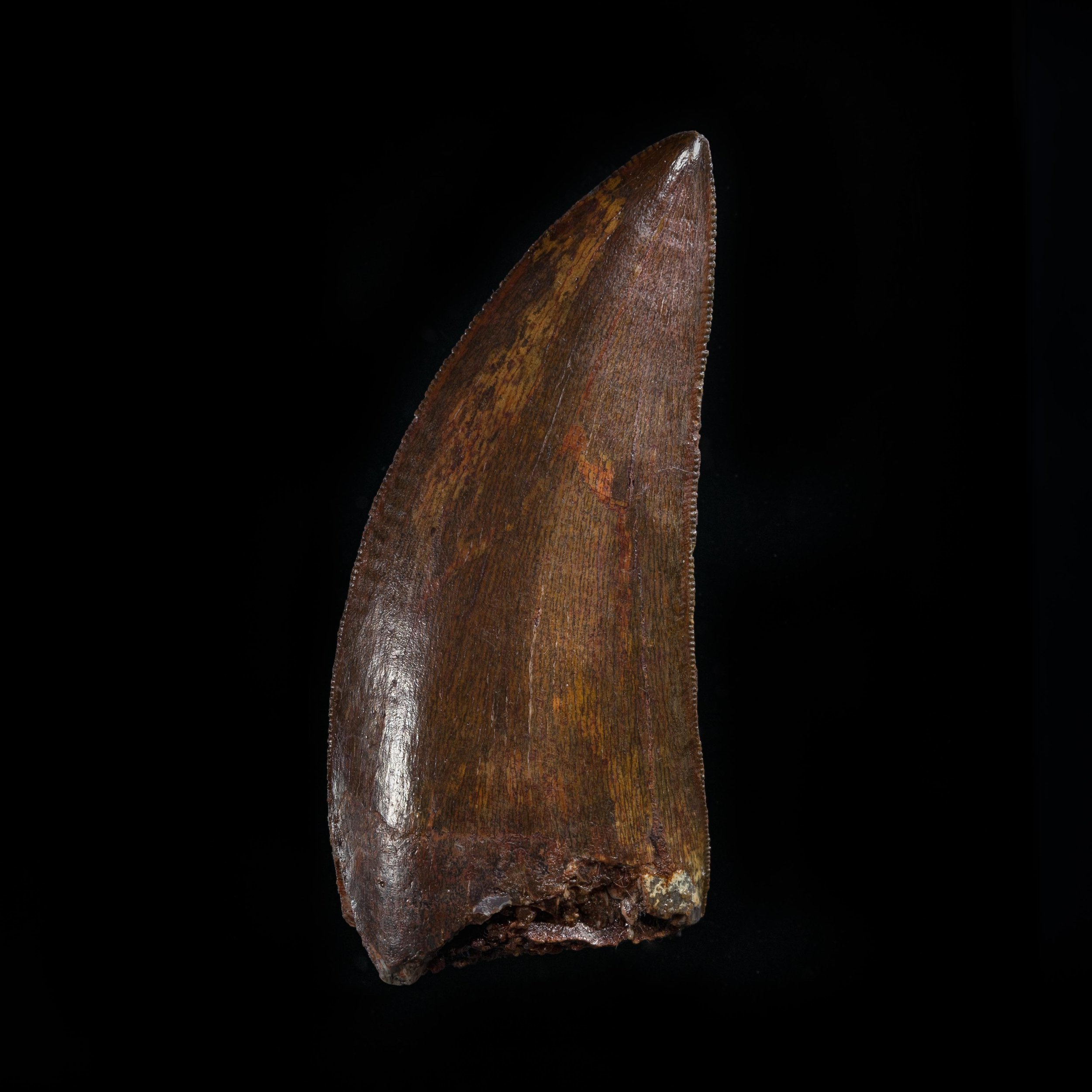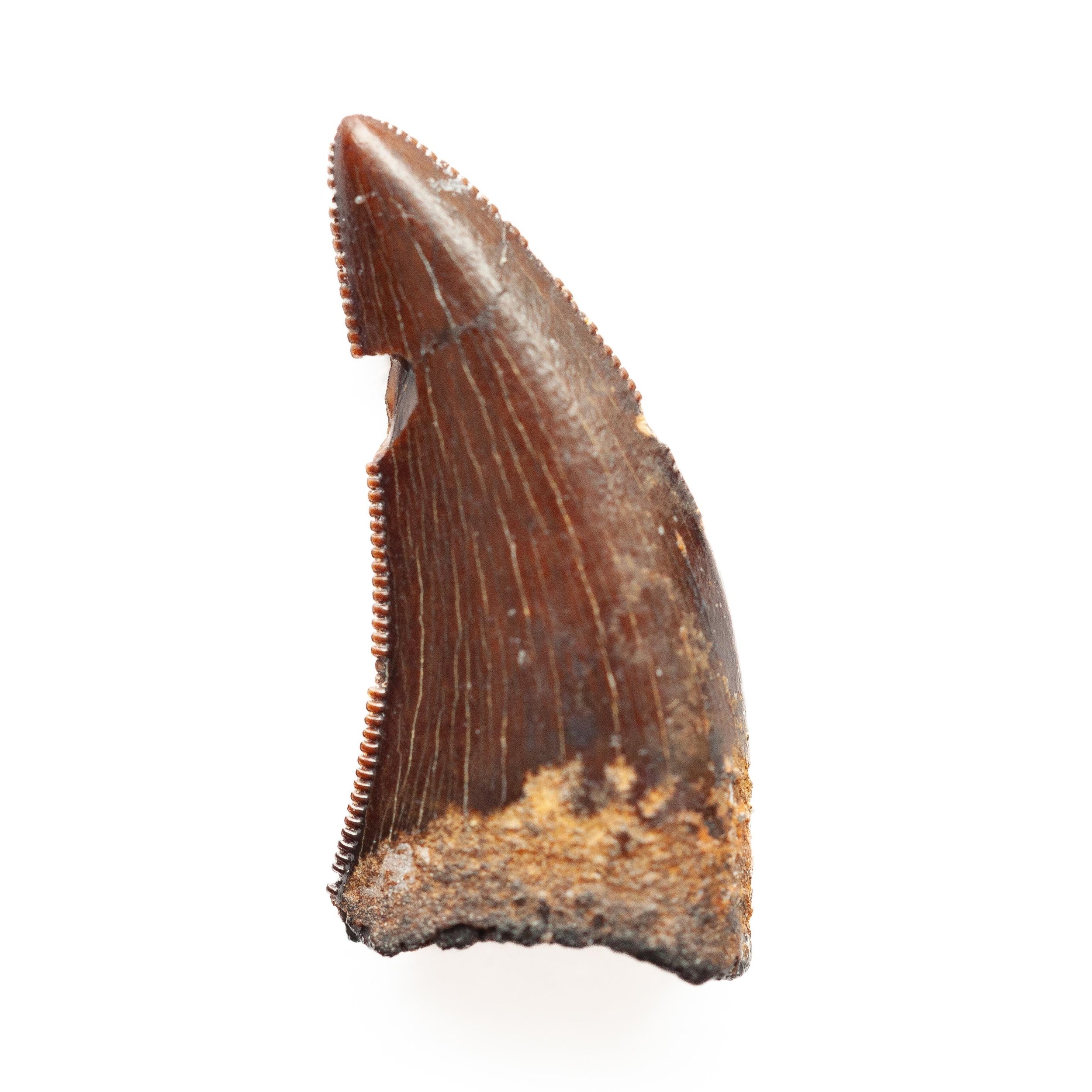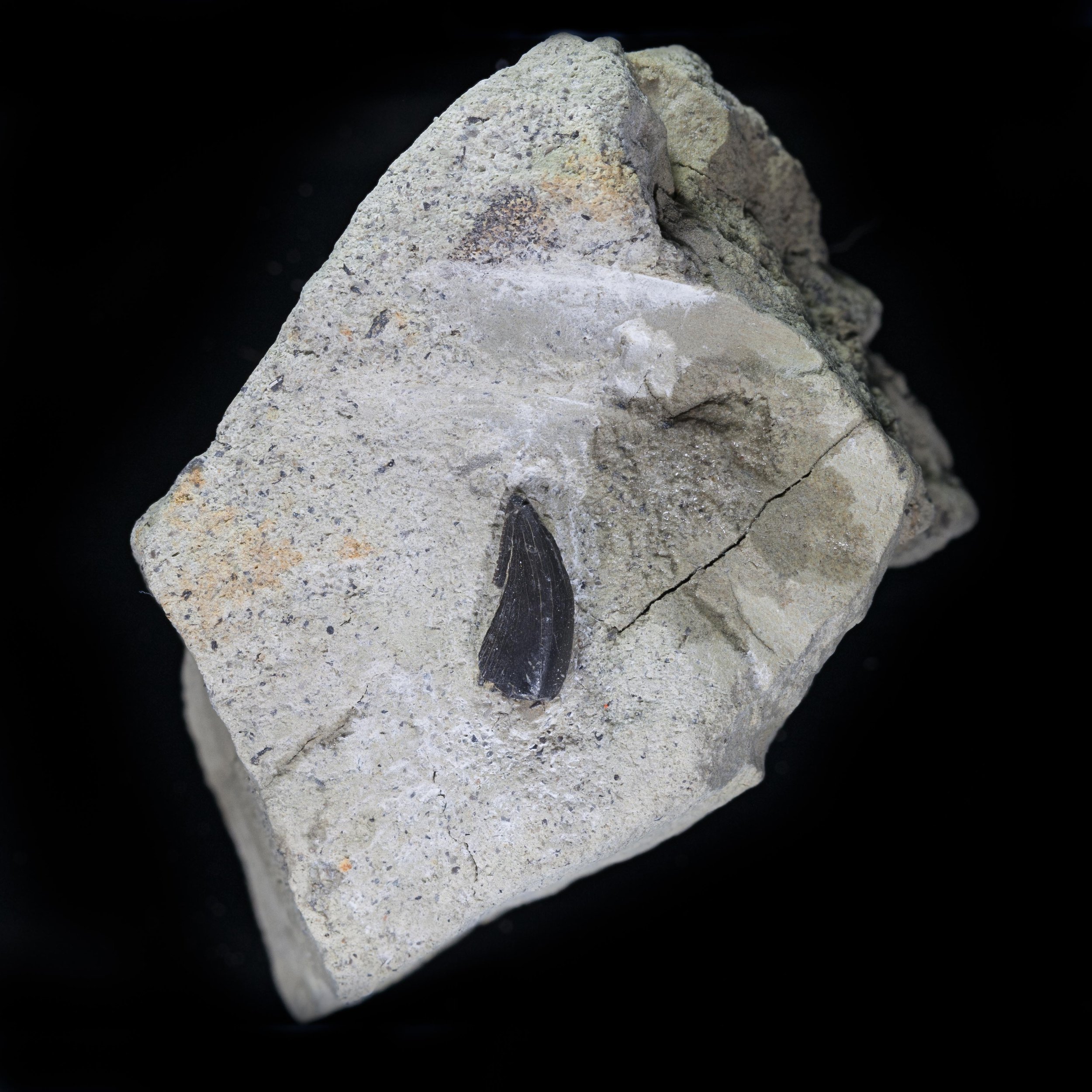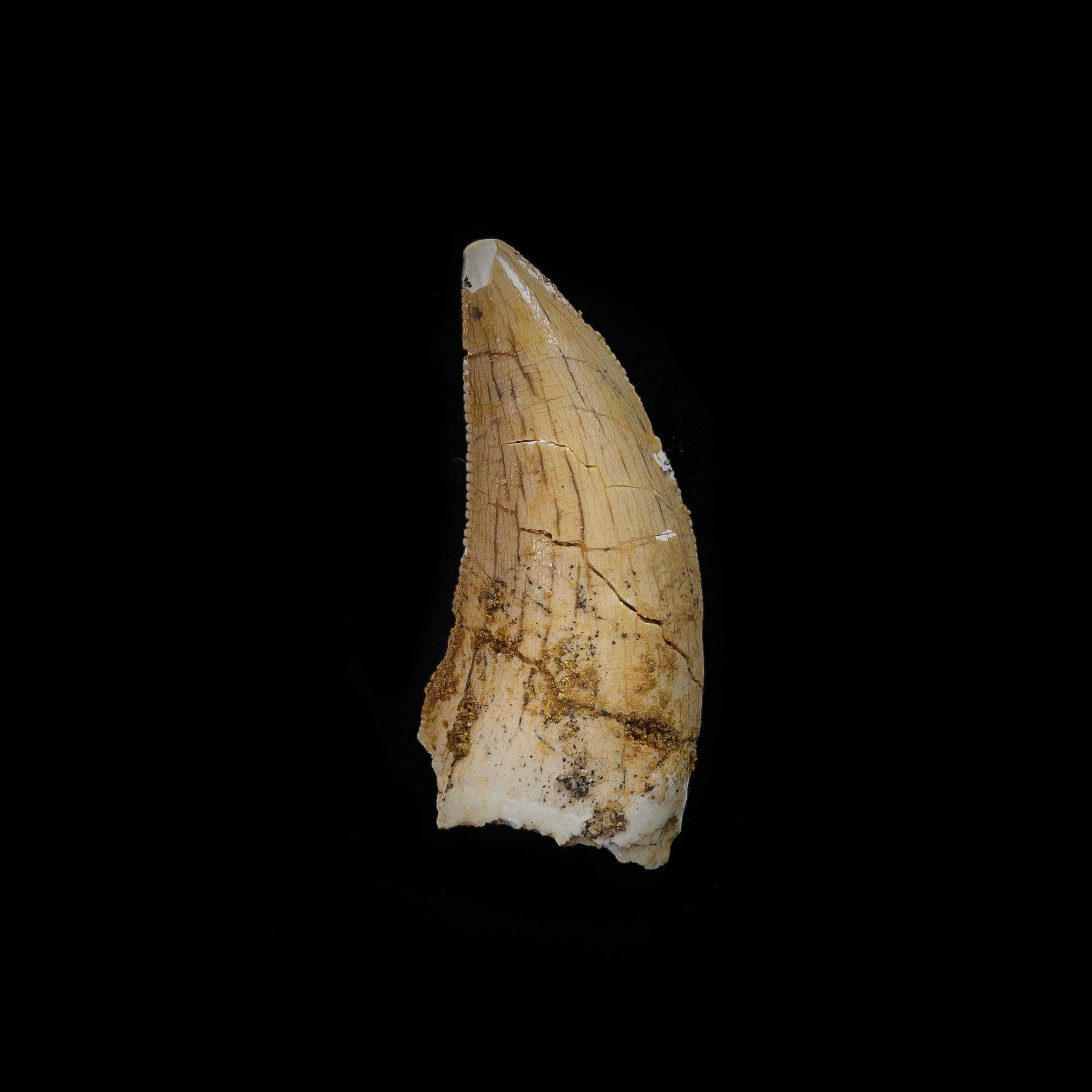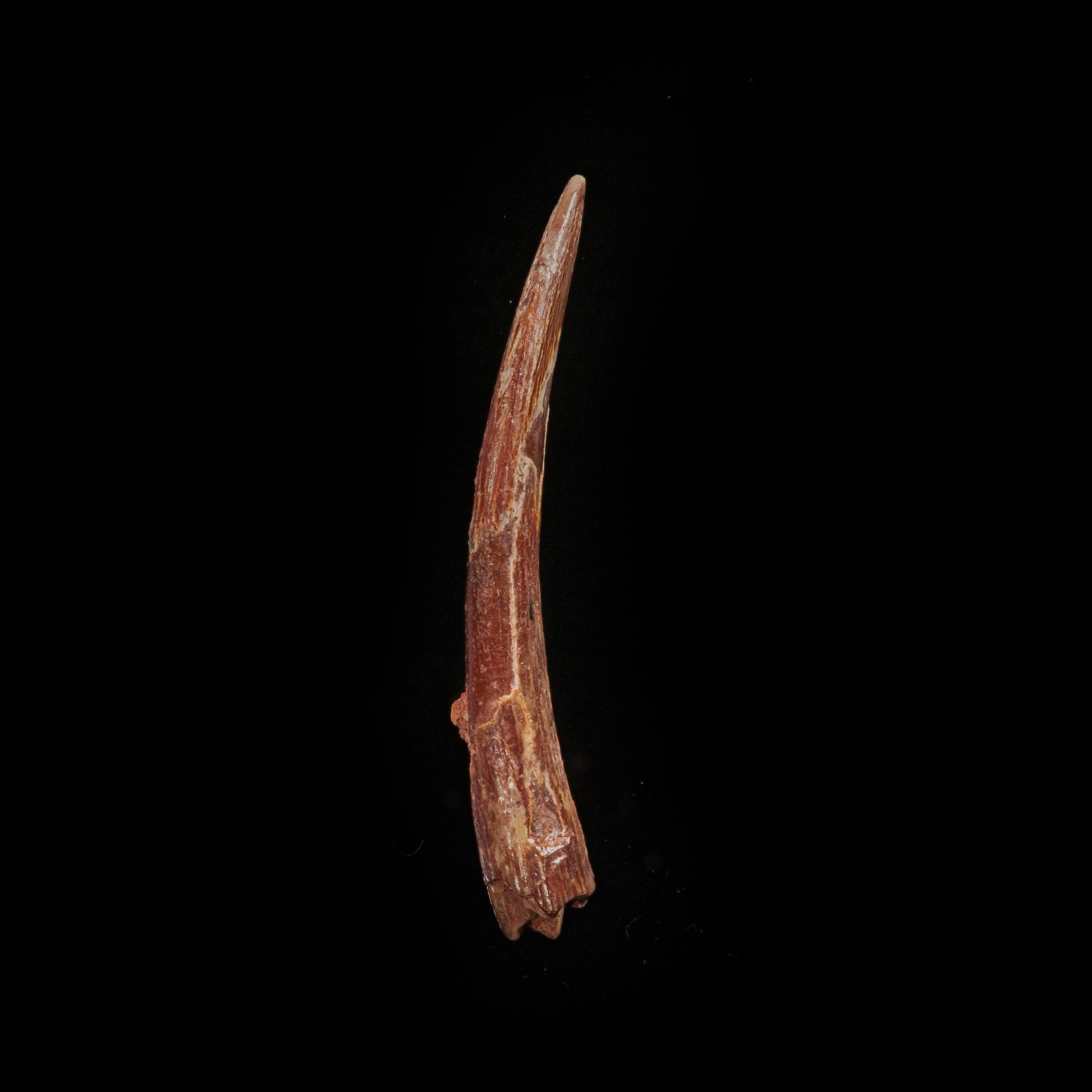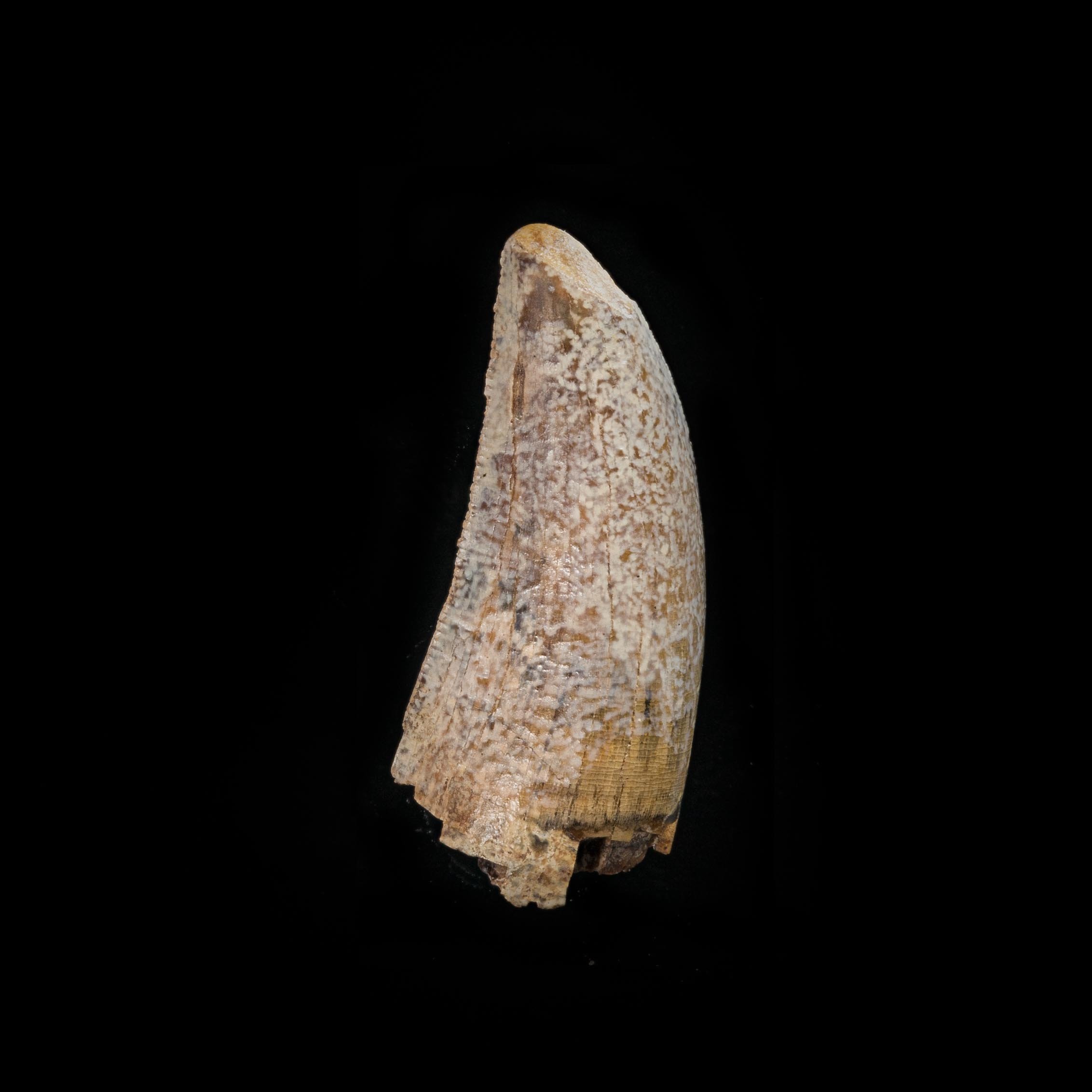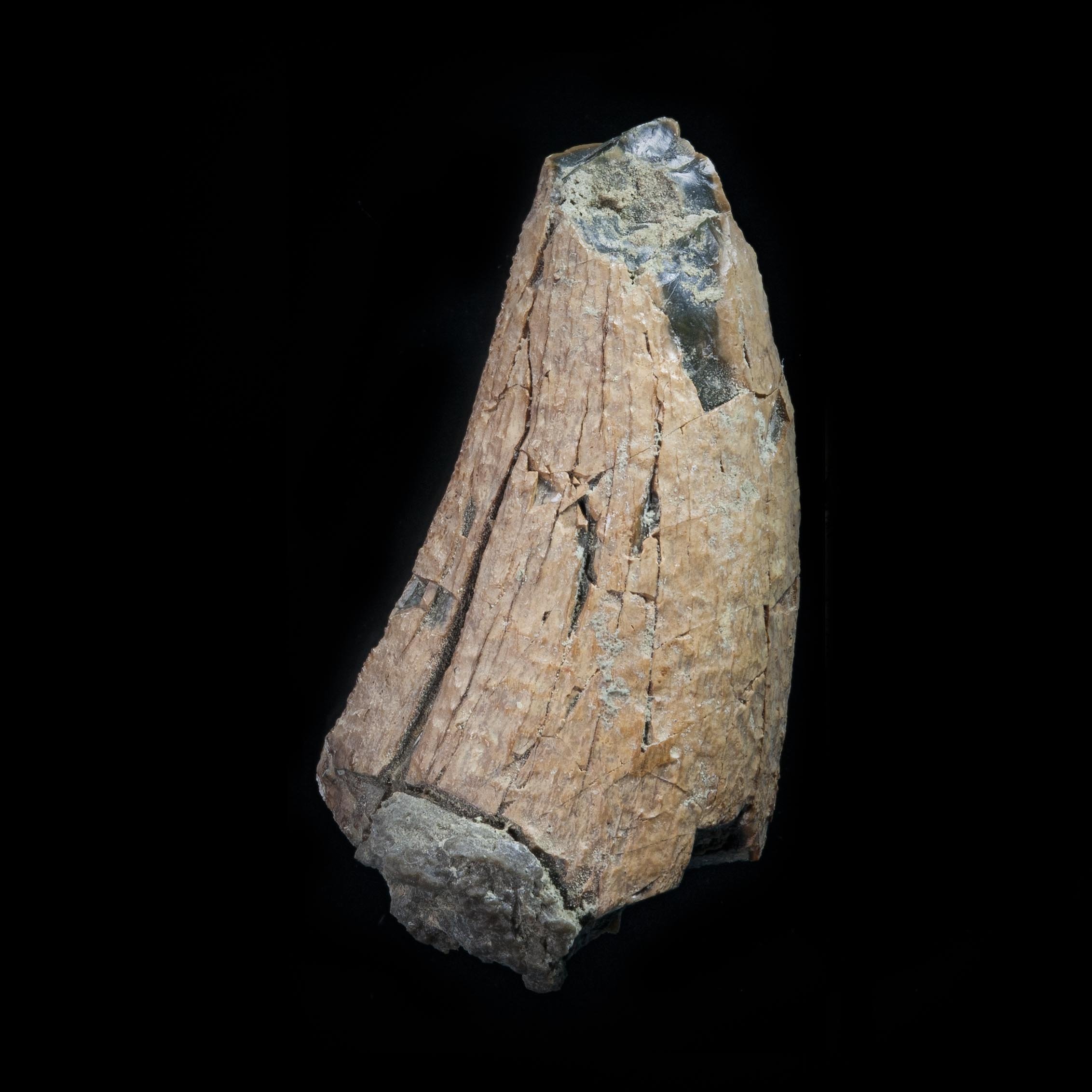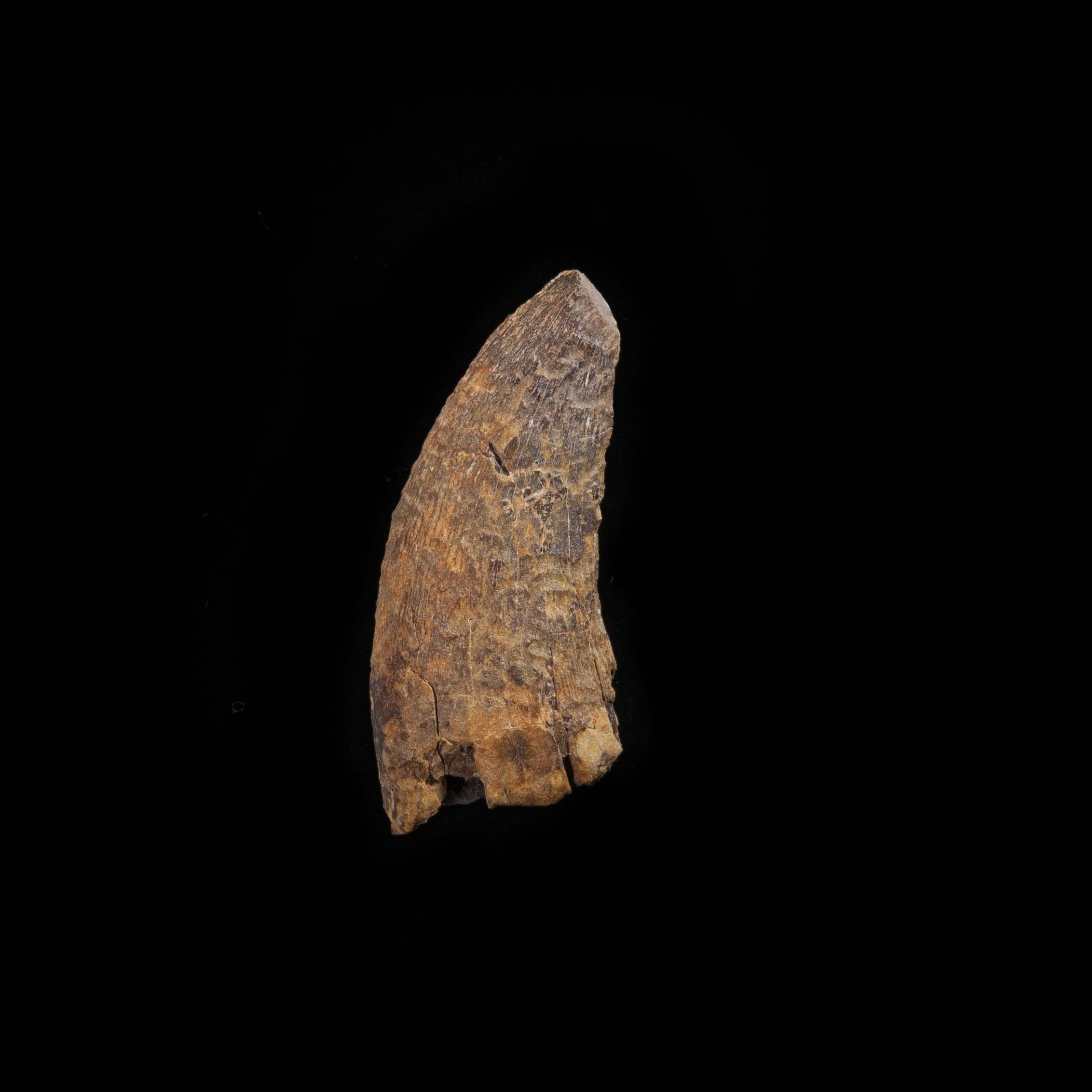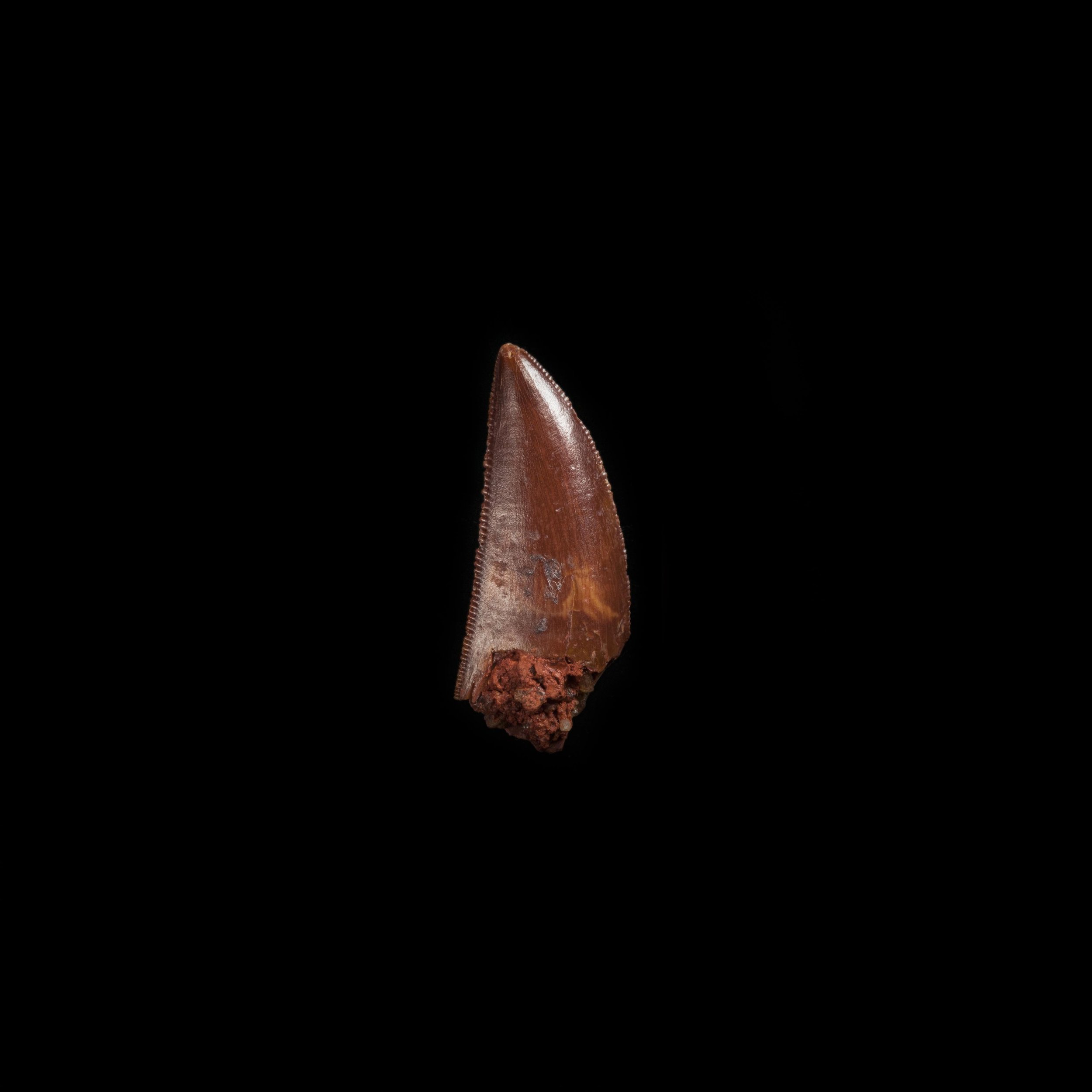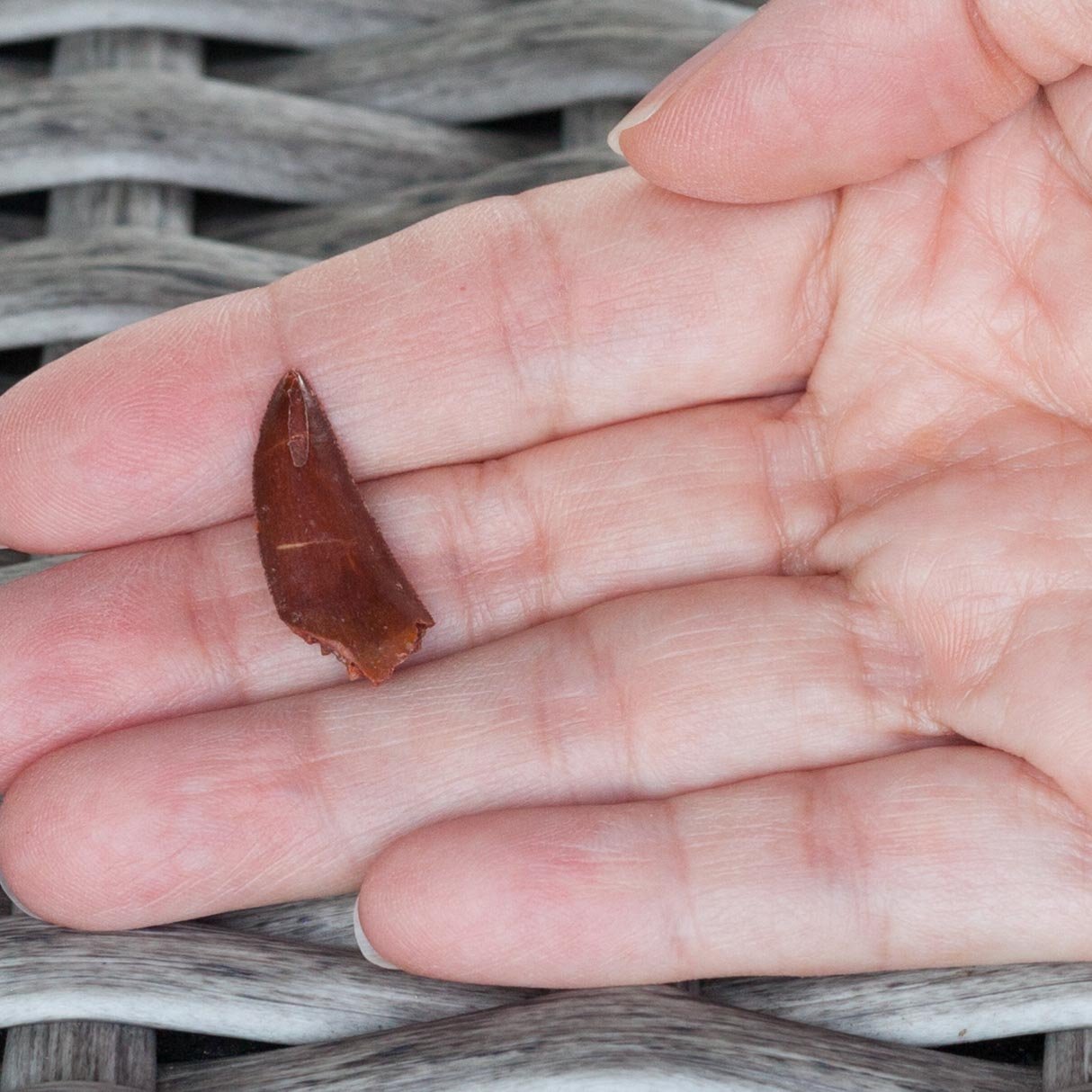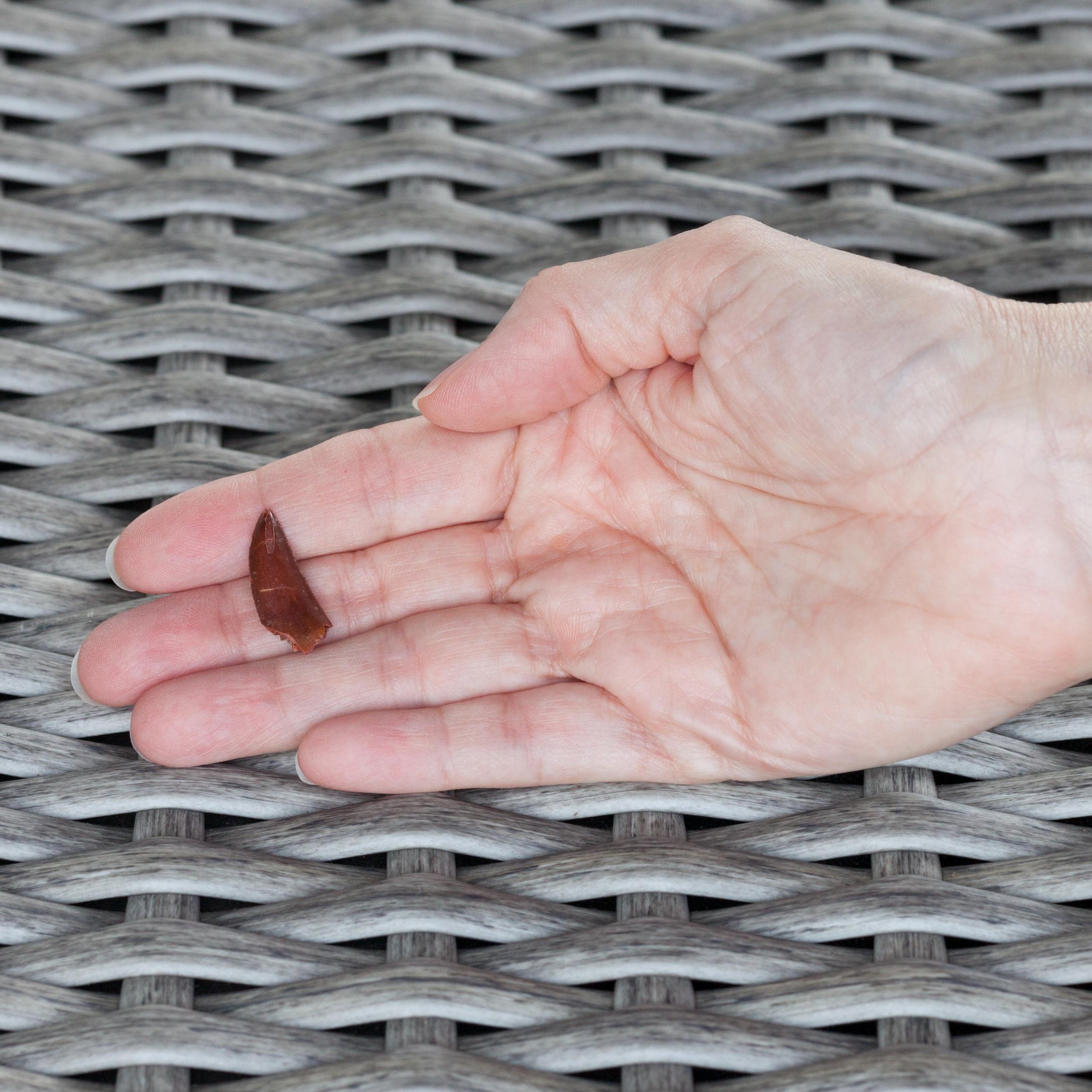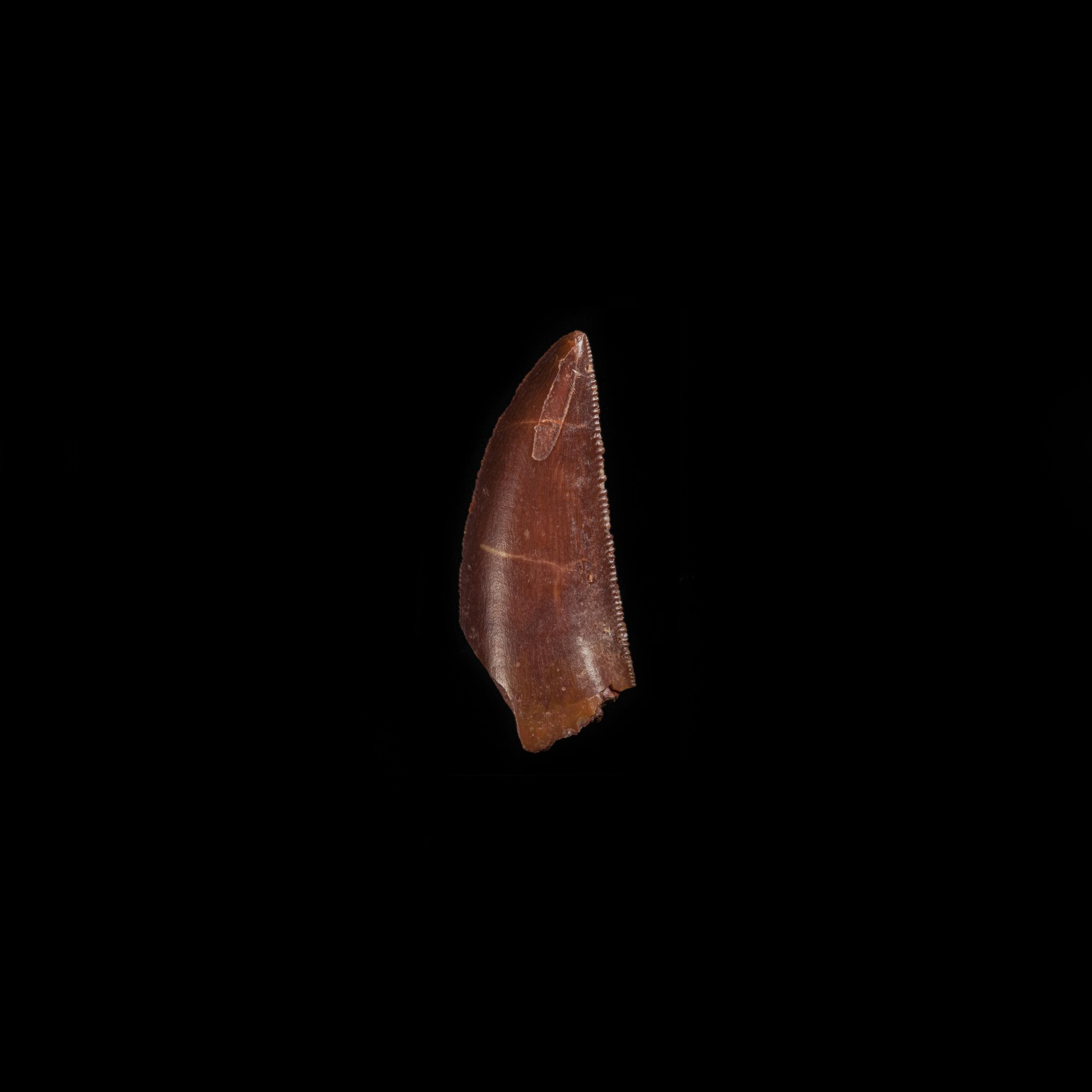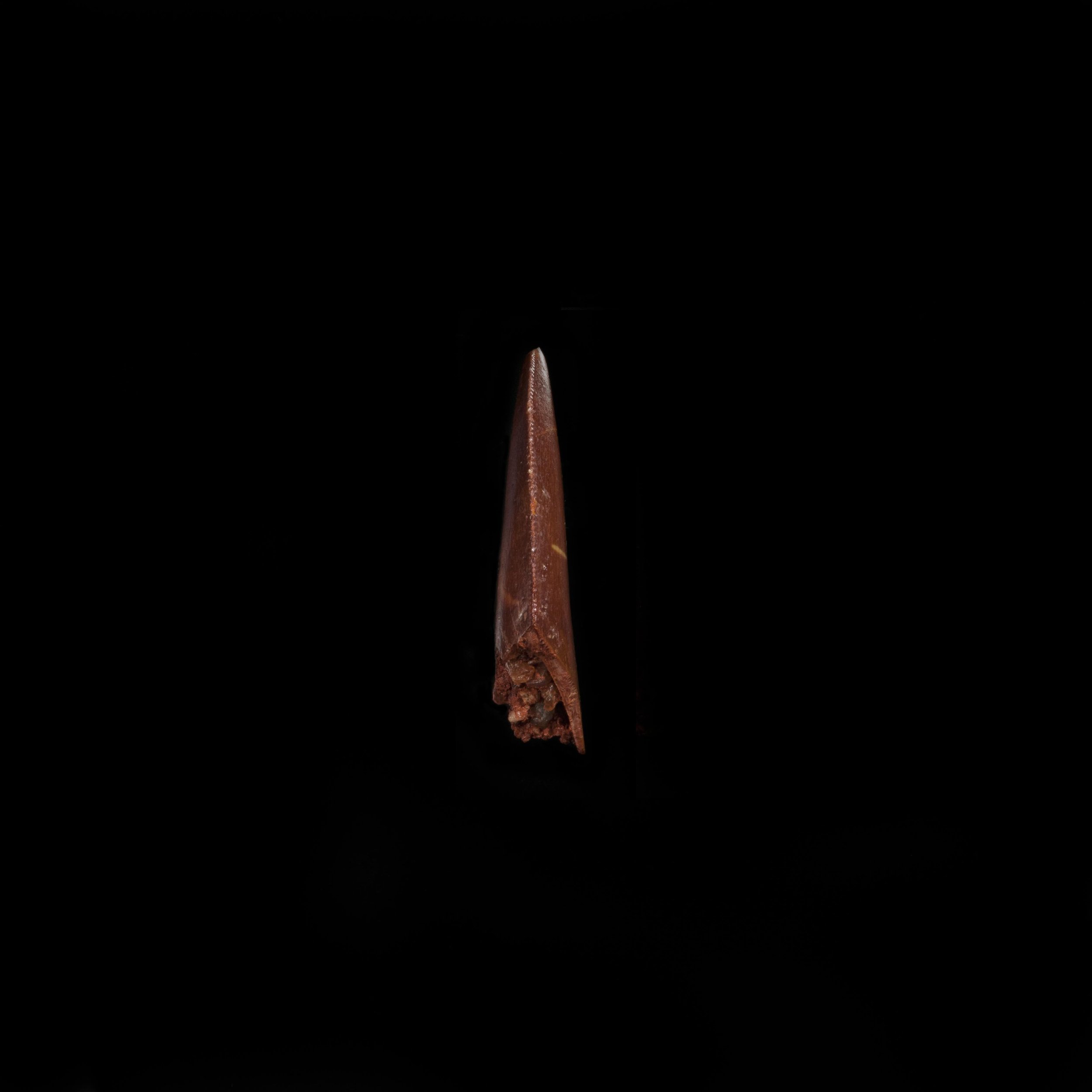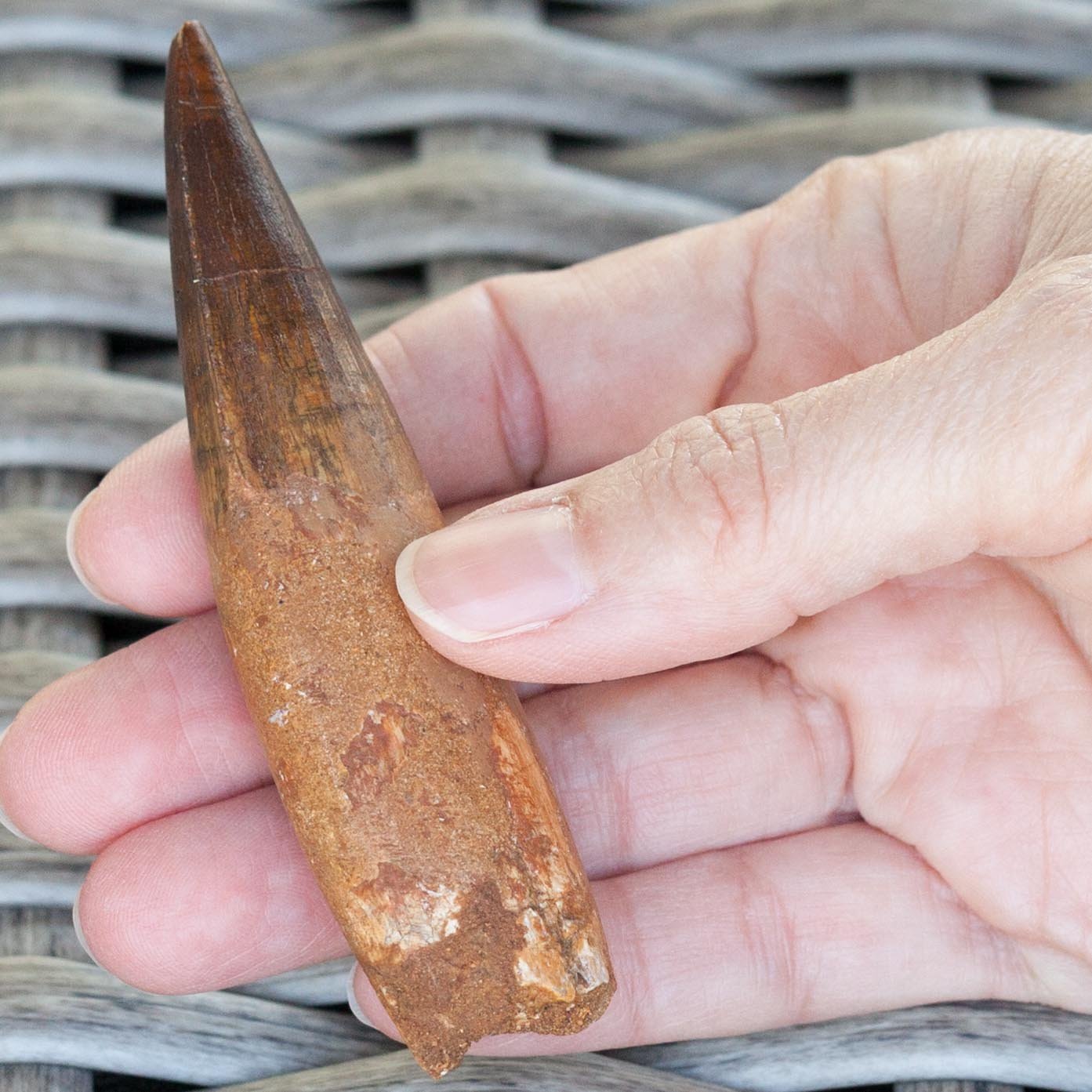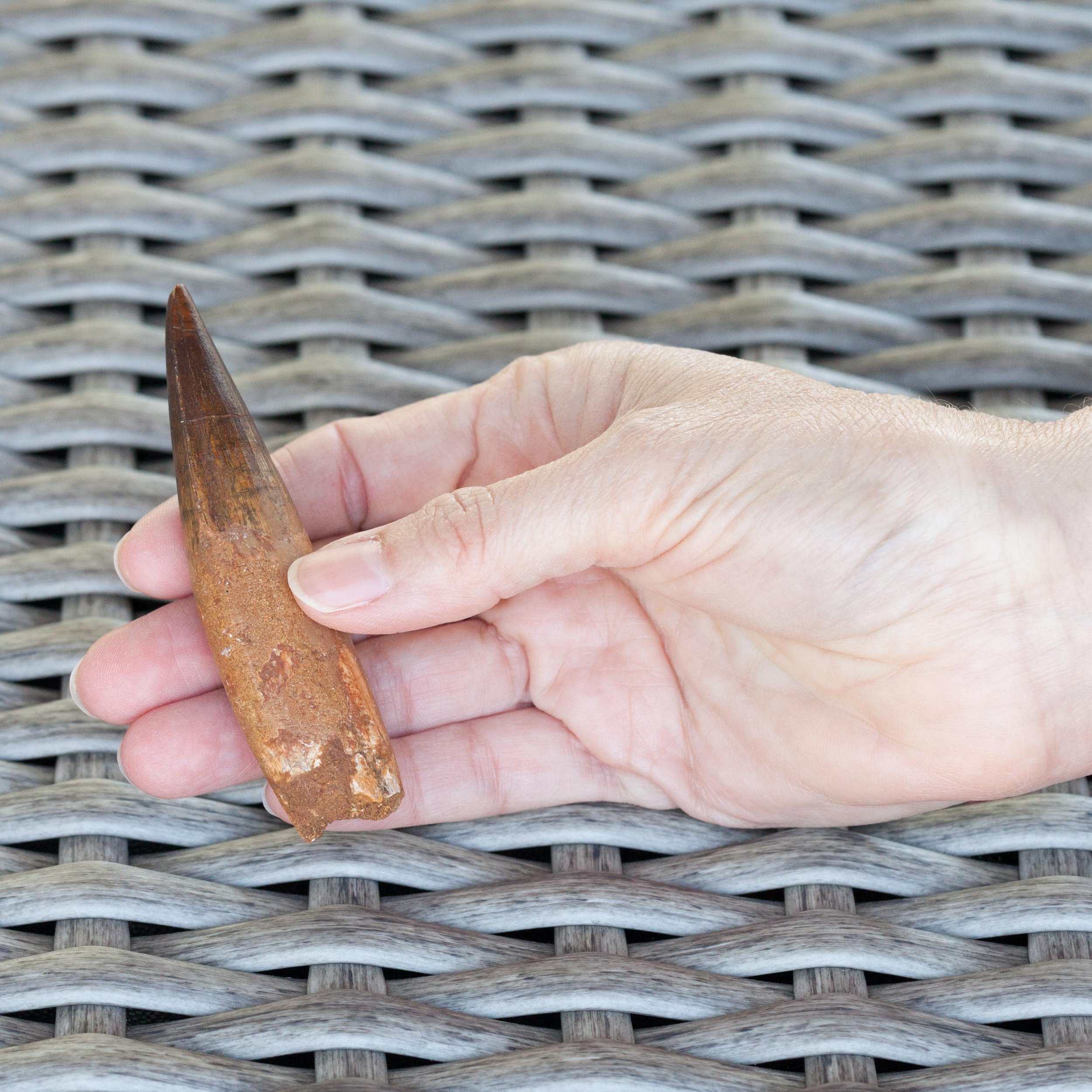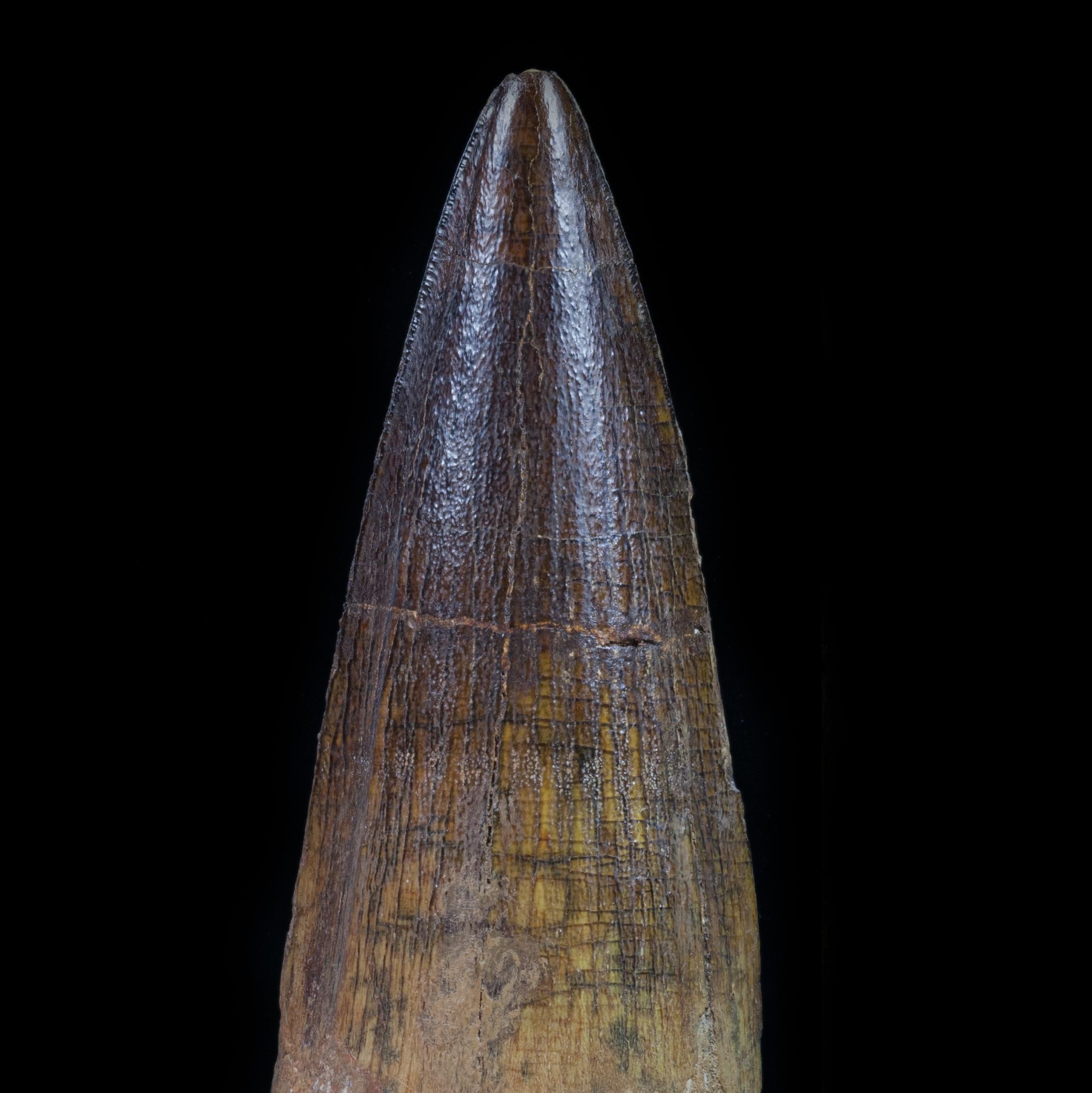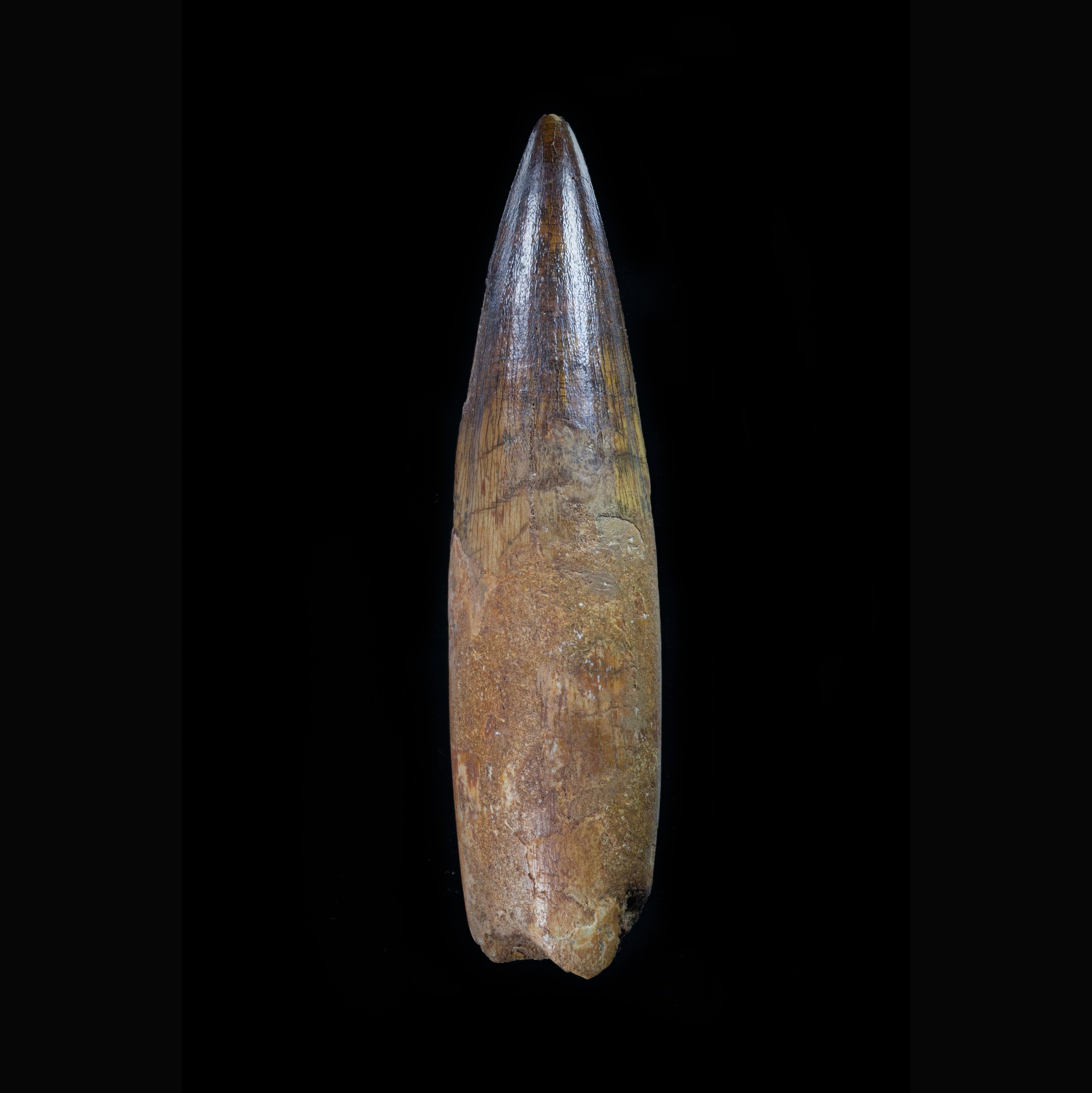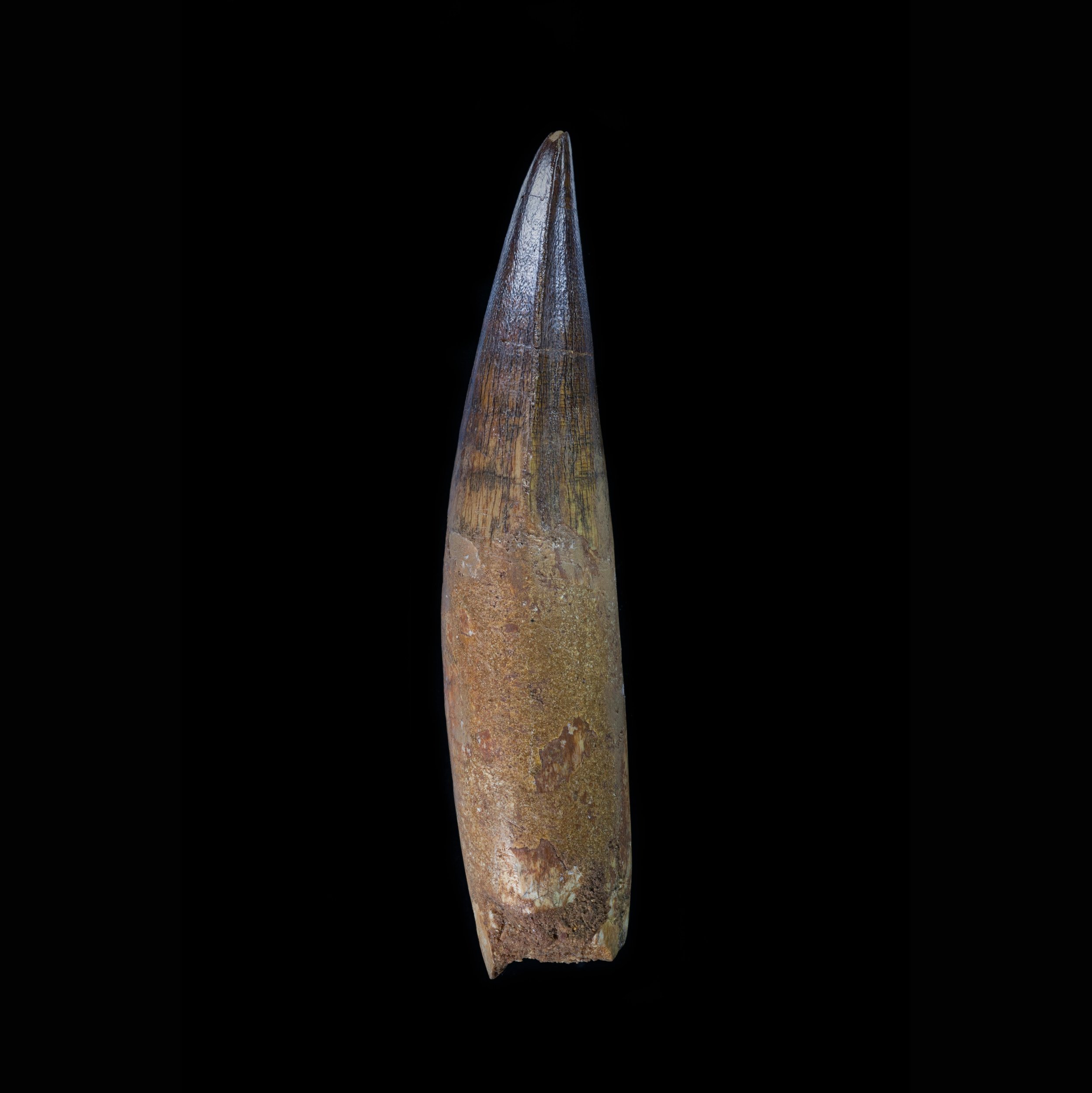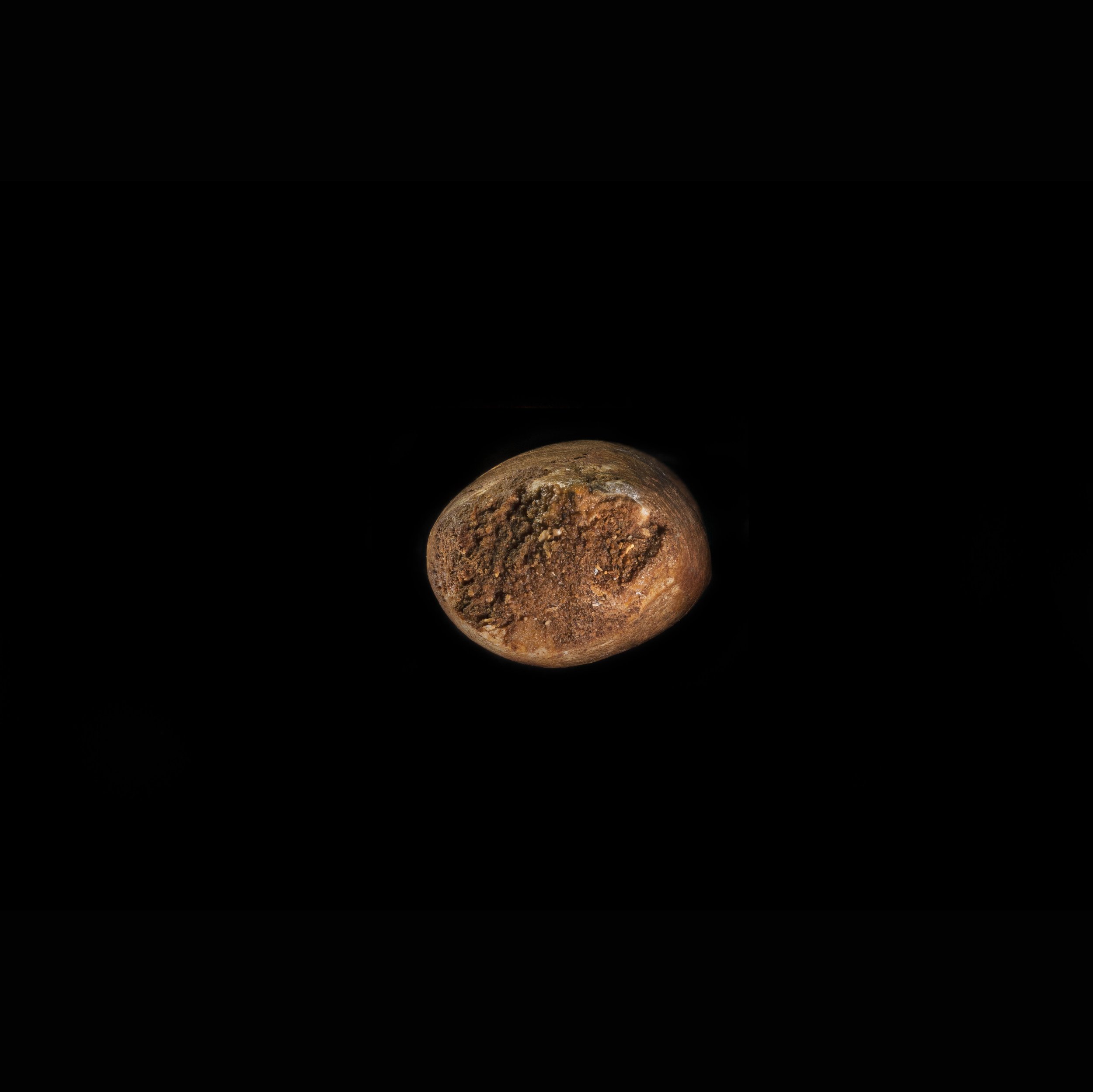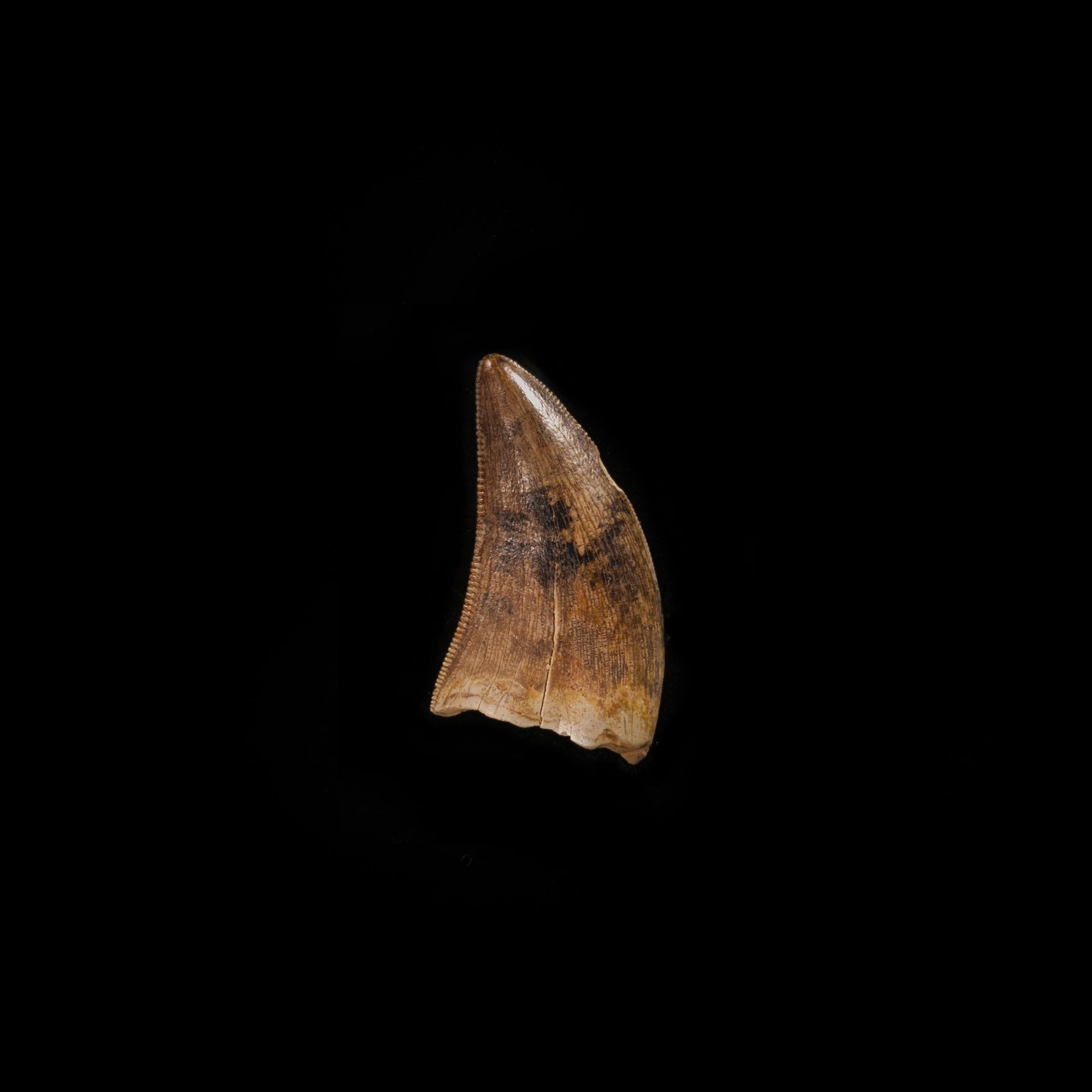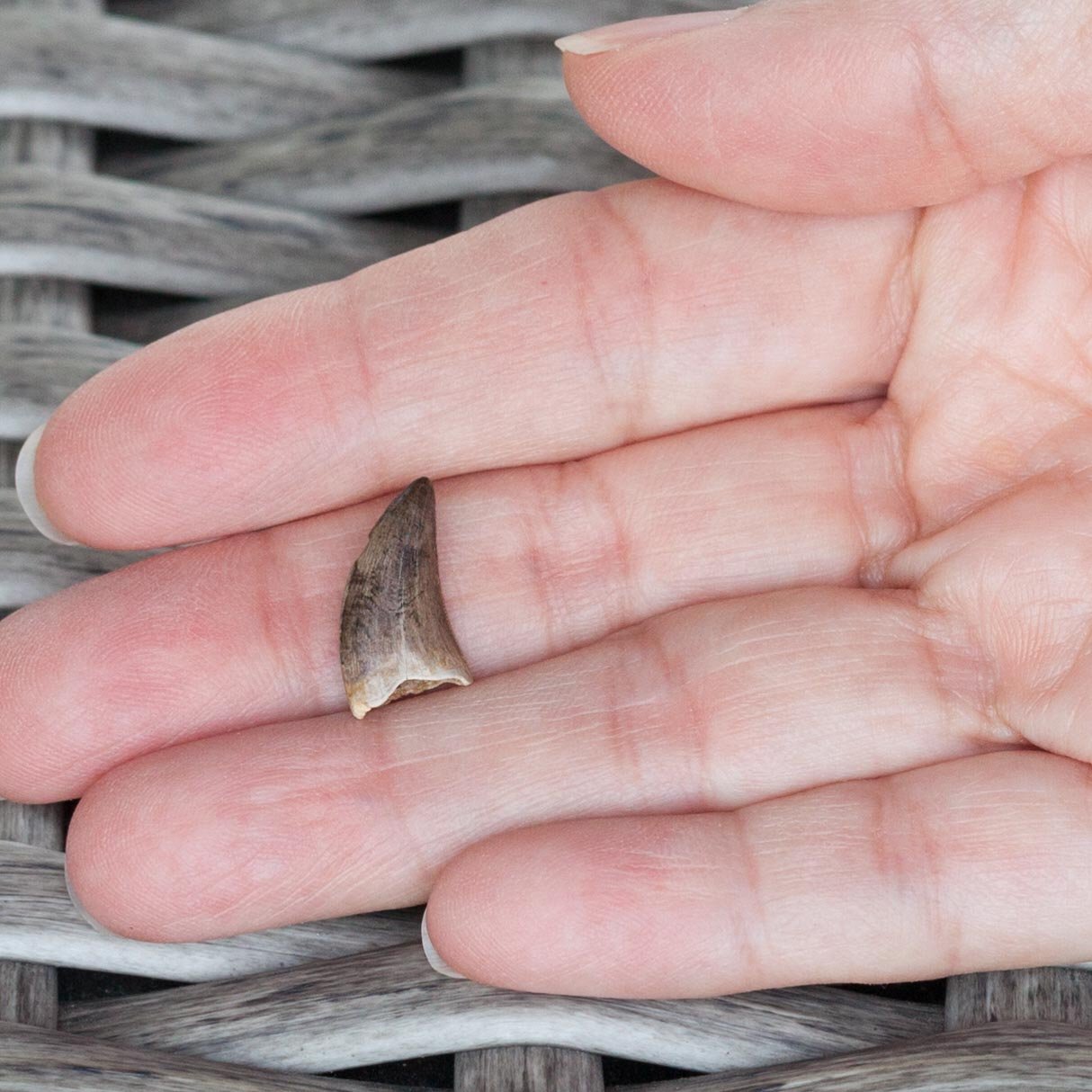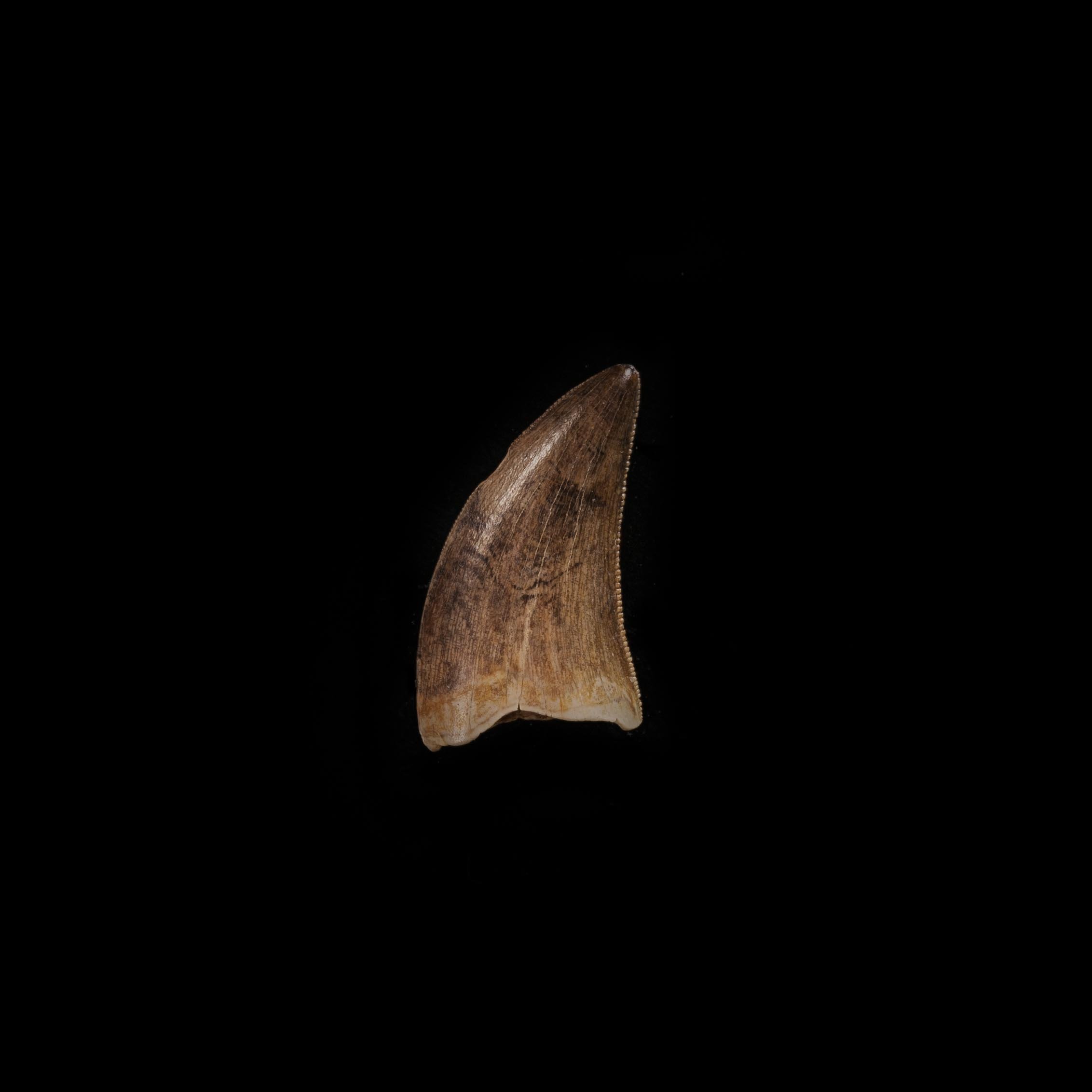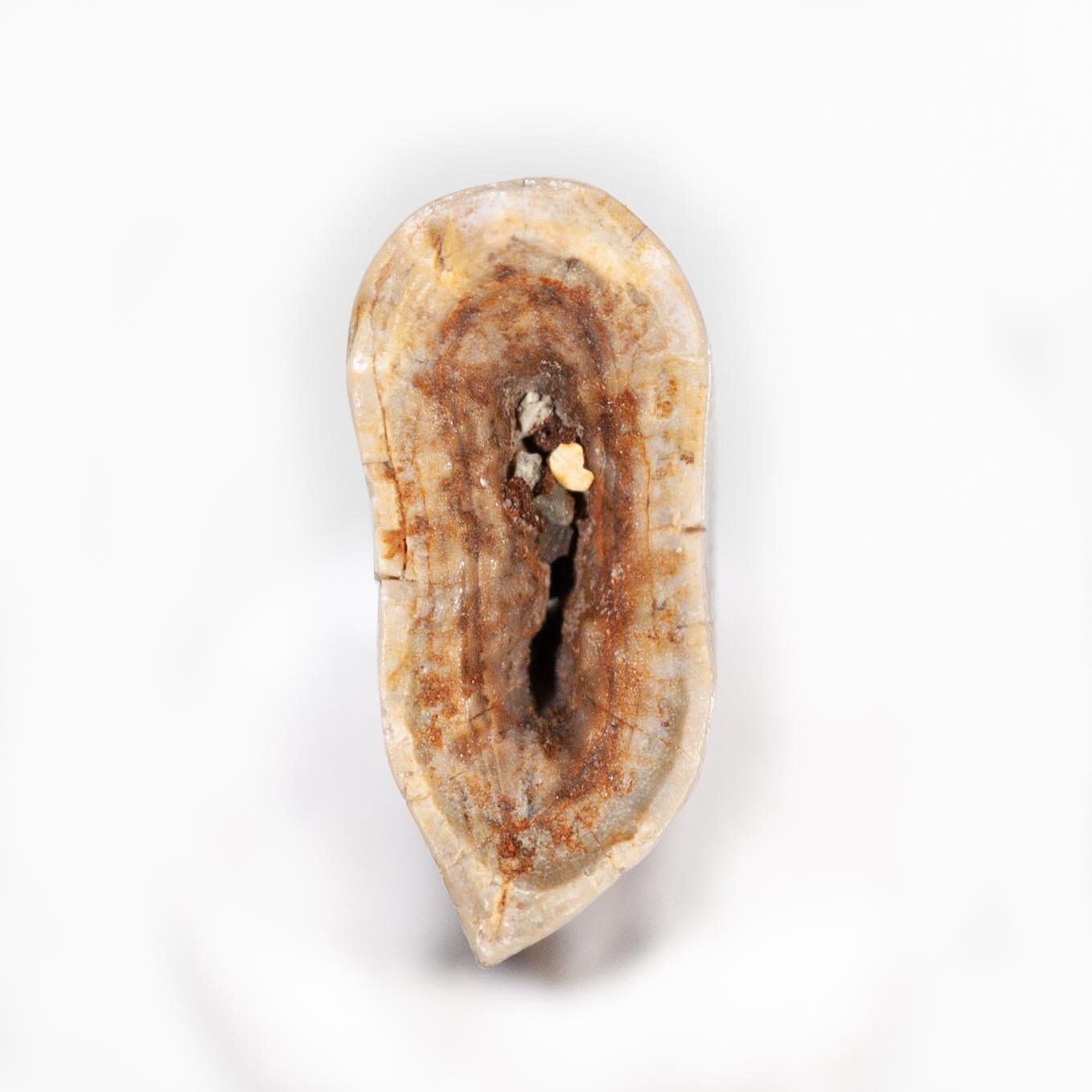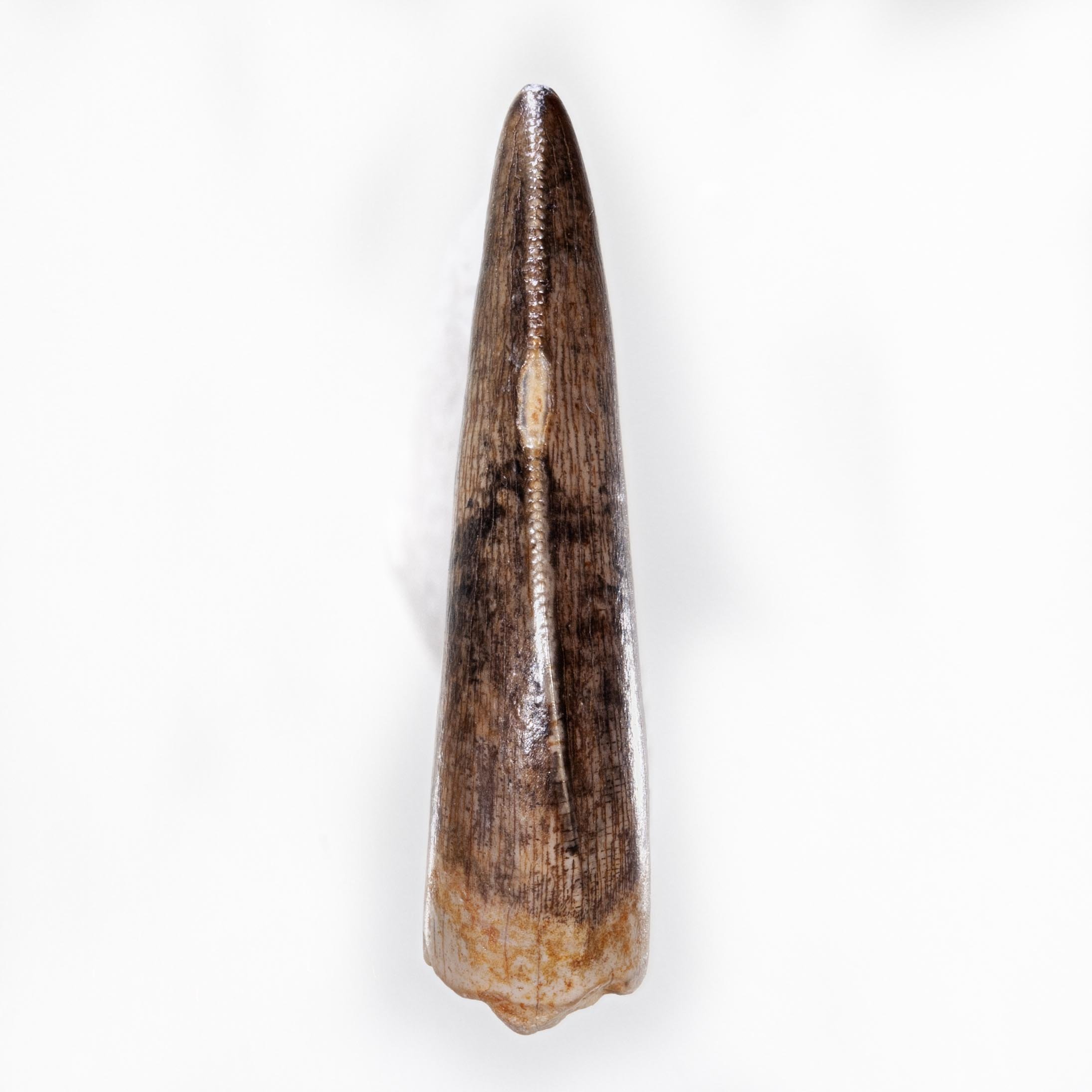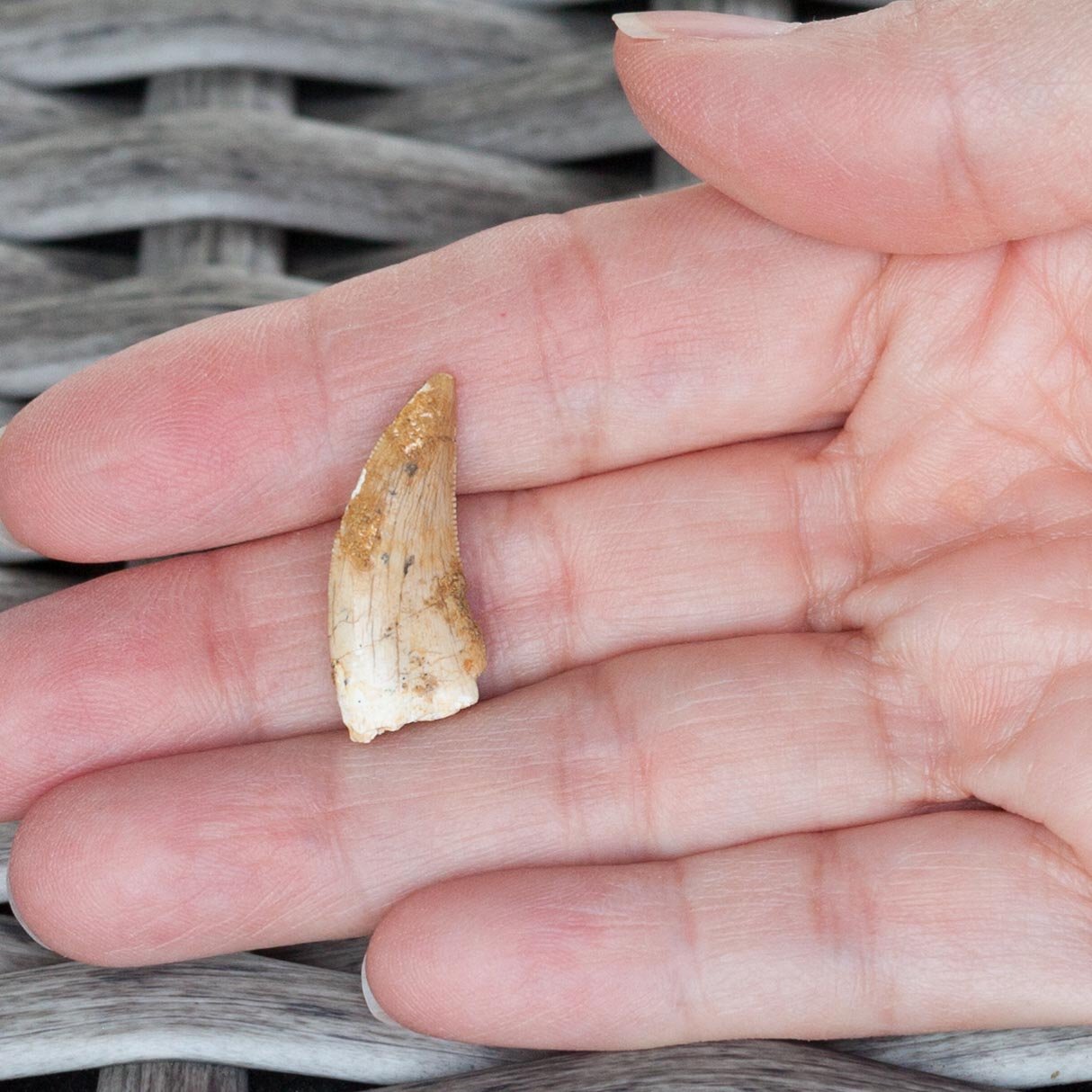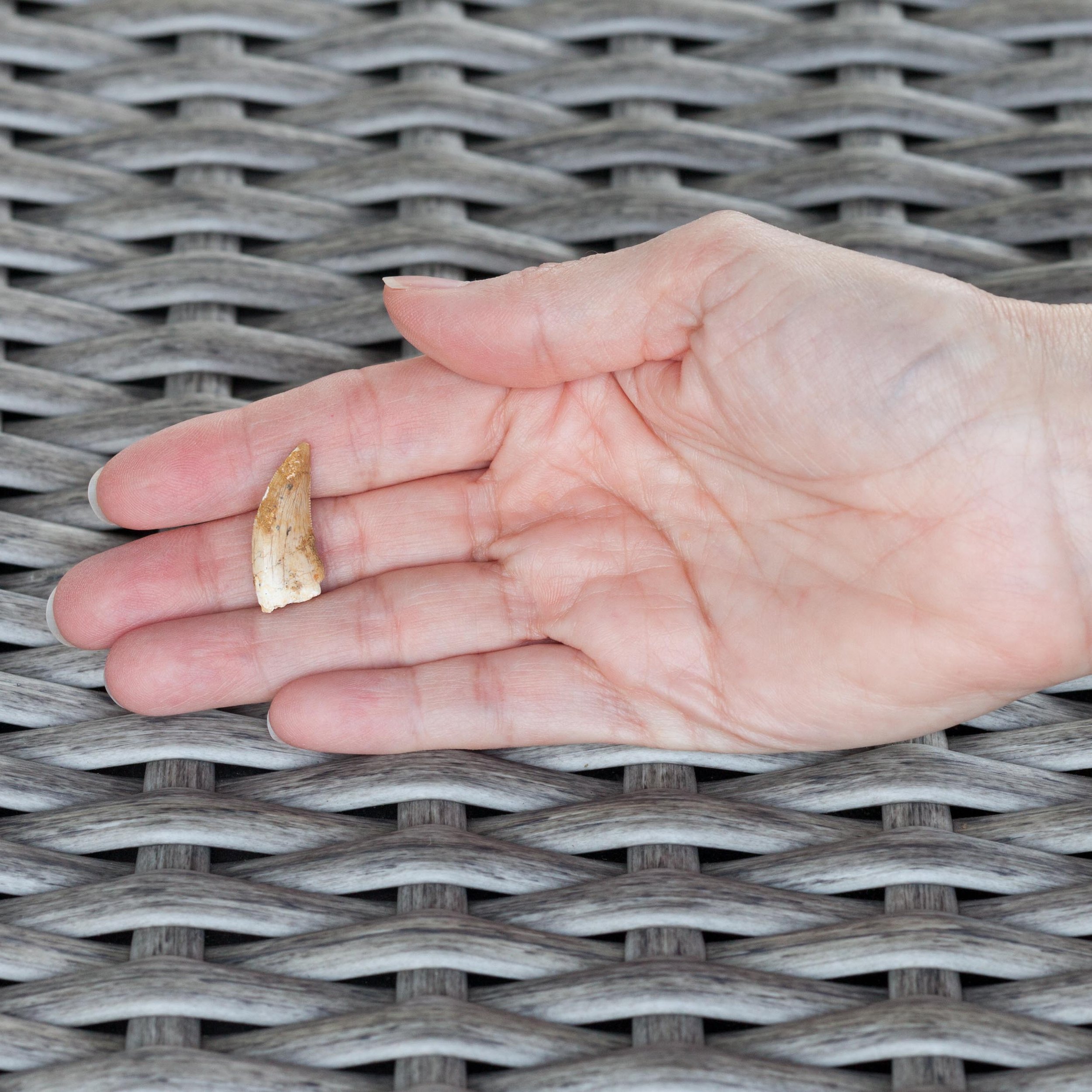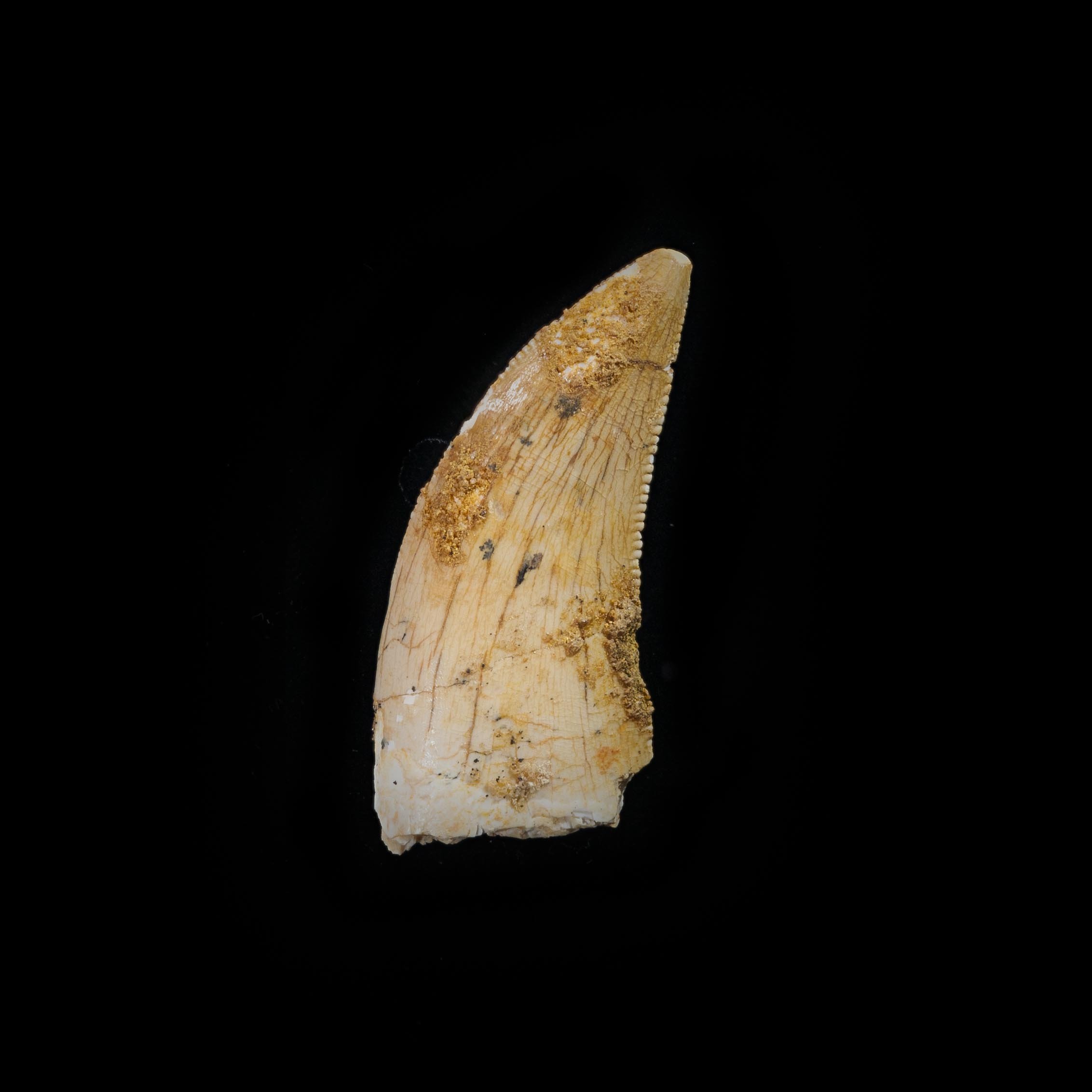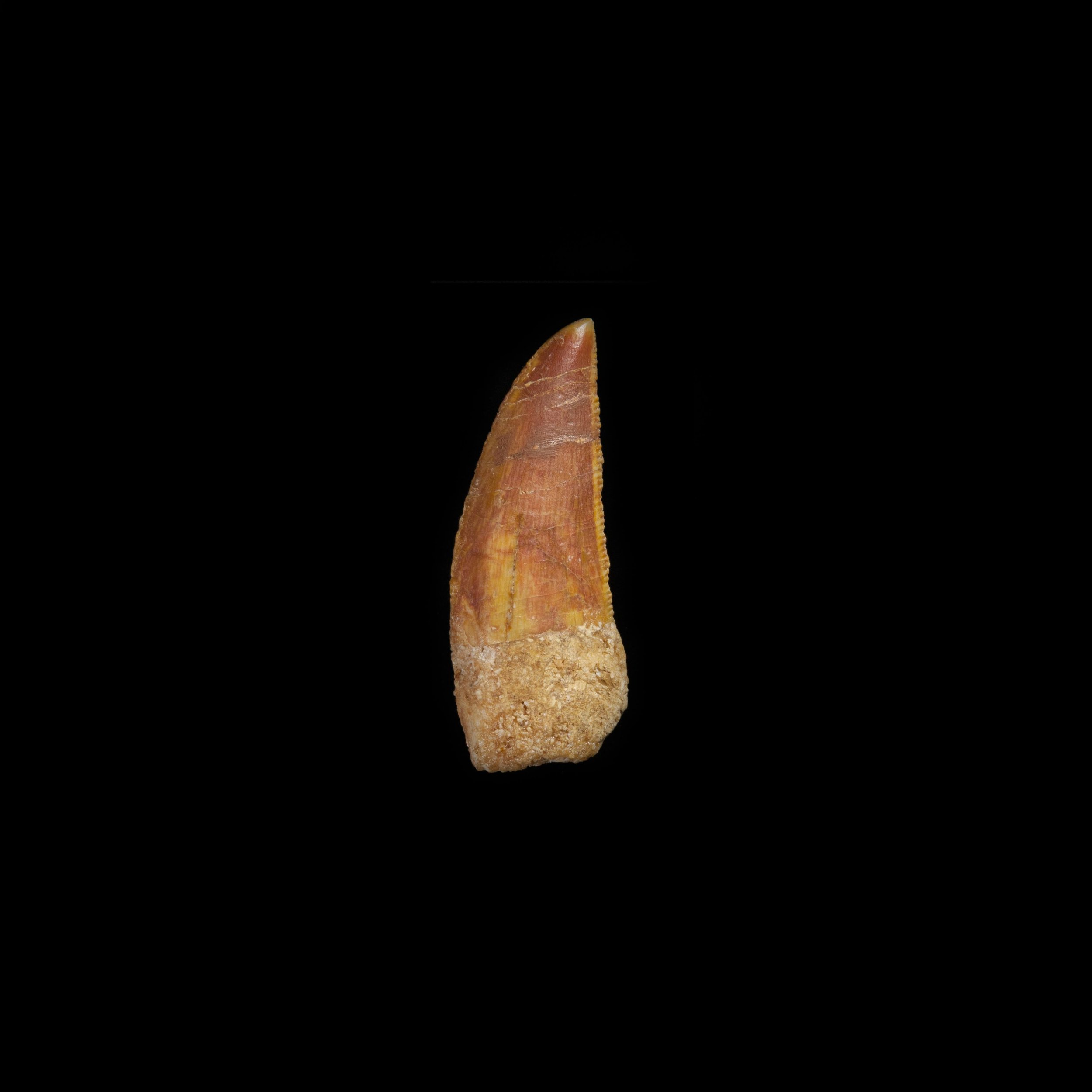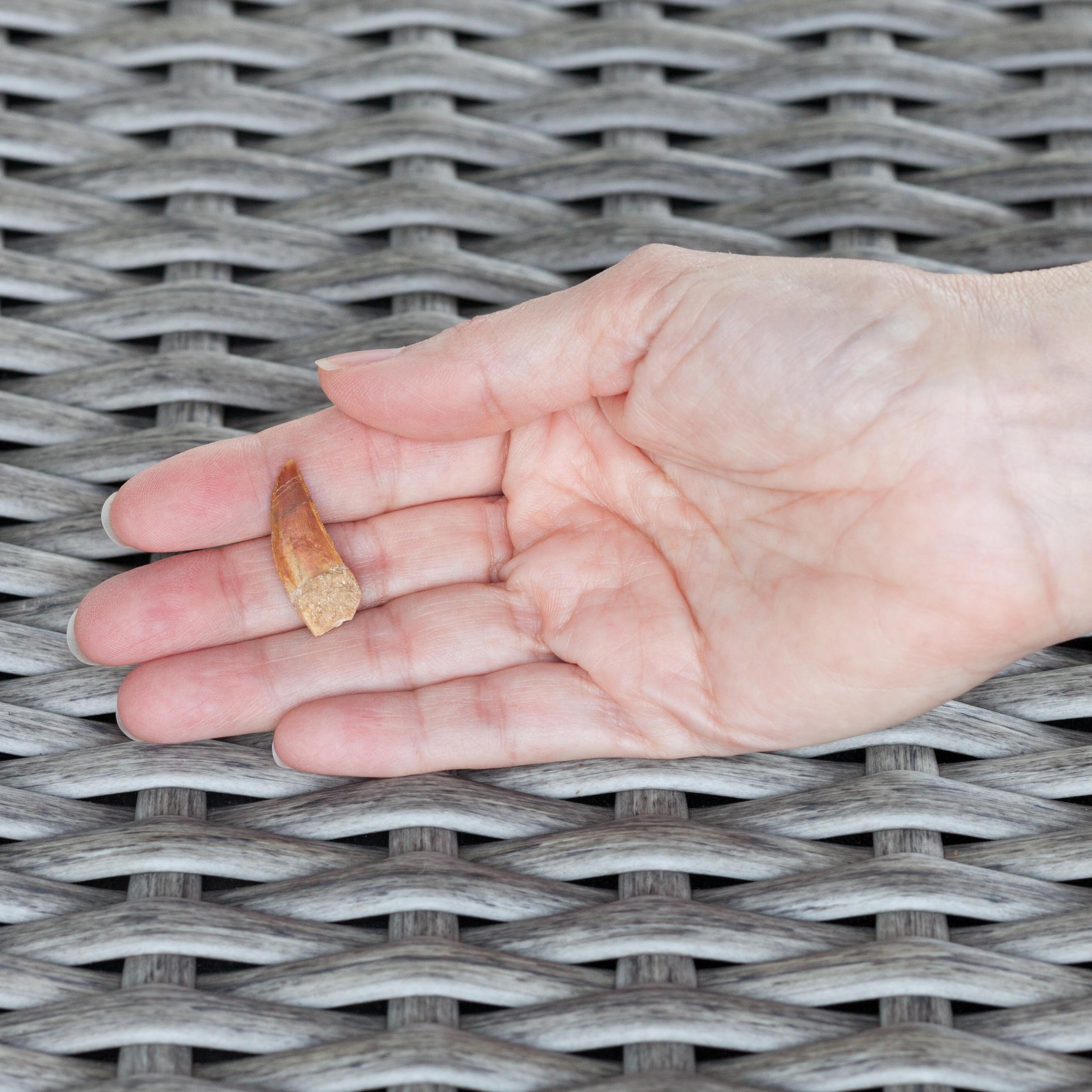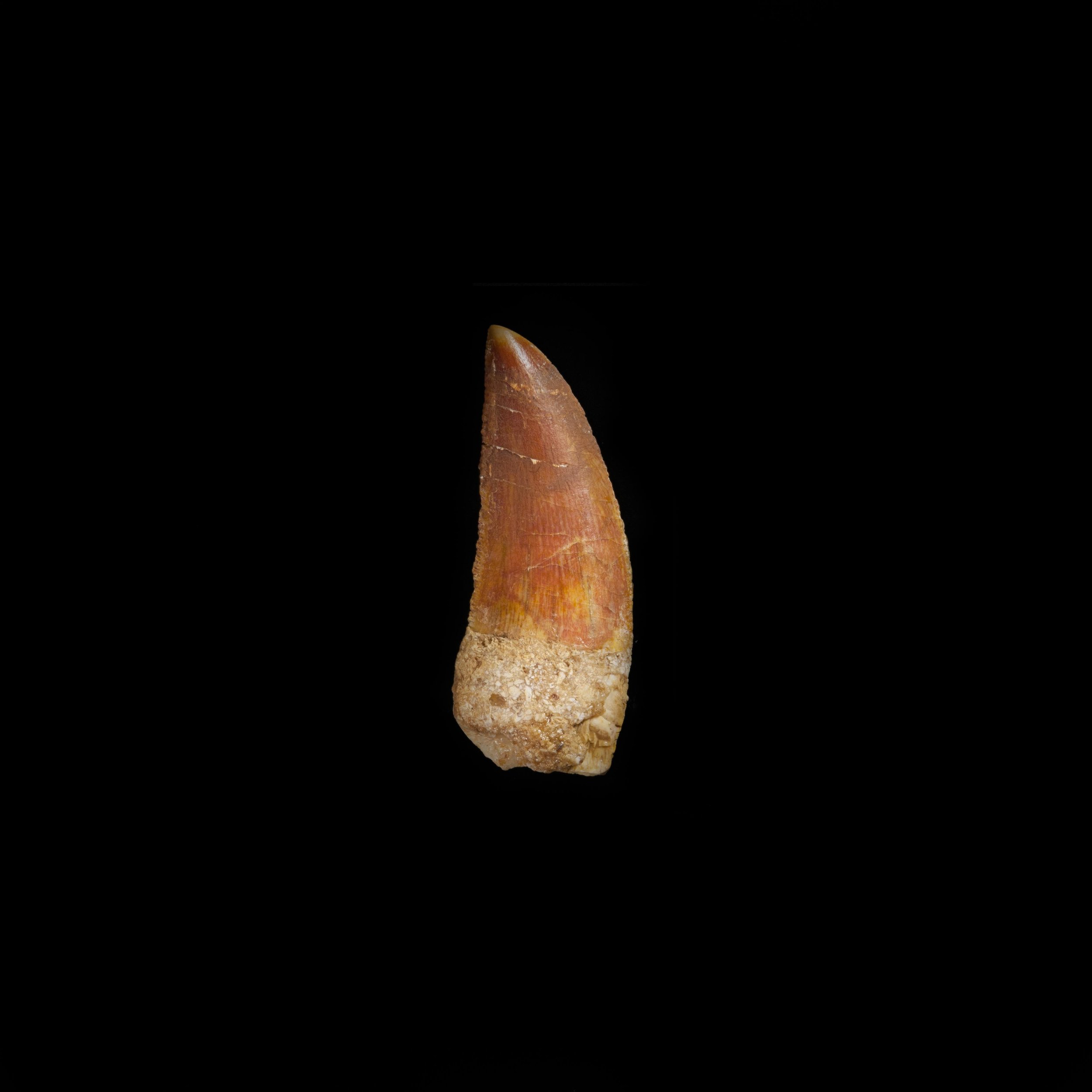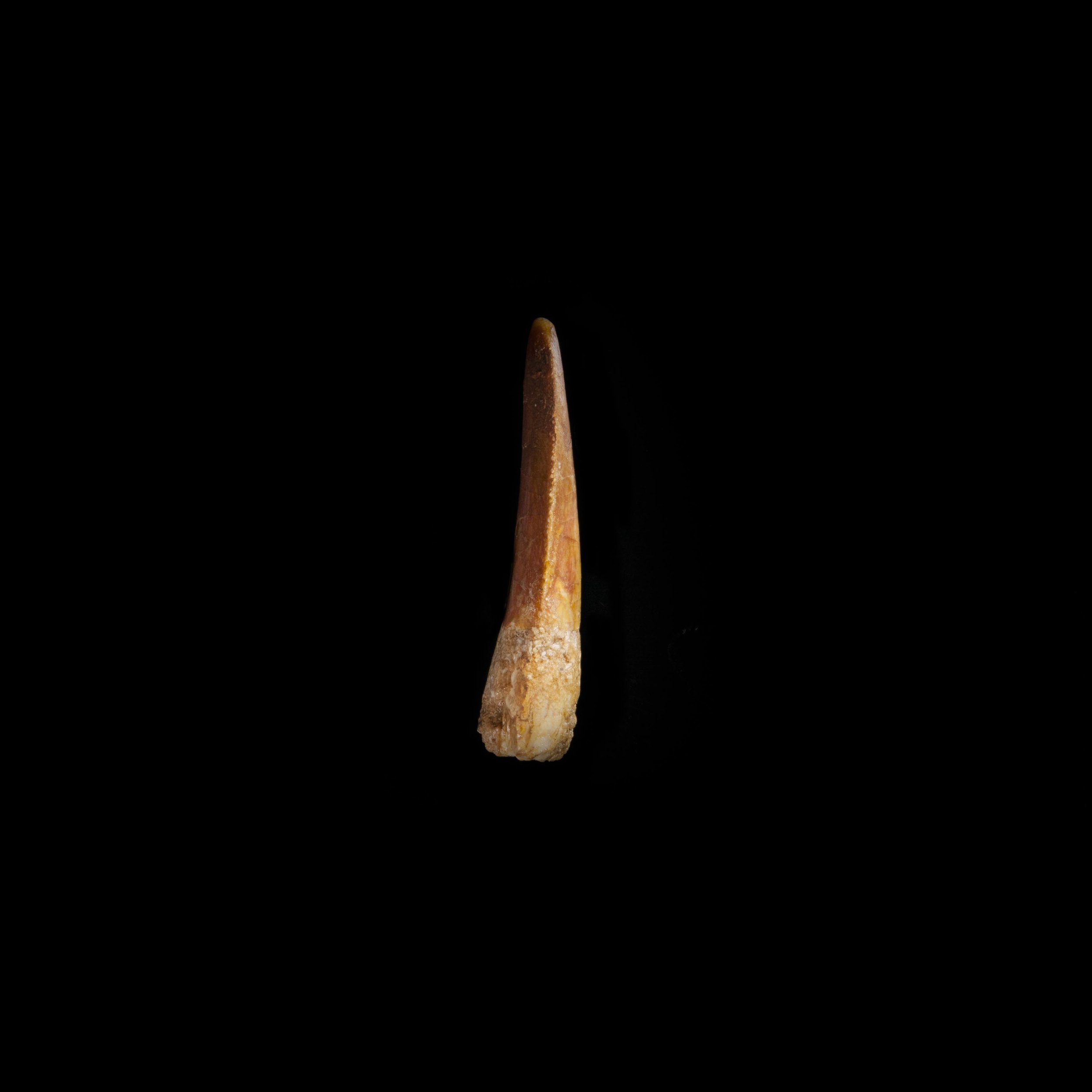 Image 1 of 4
Image 1 of 4

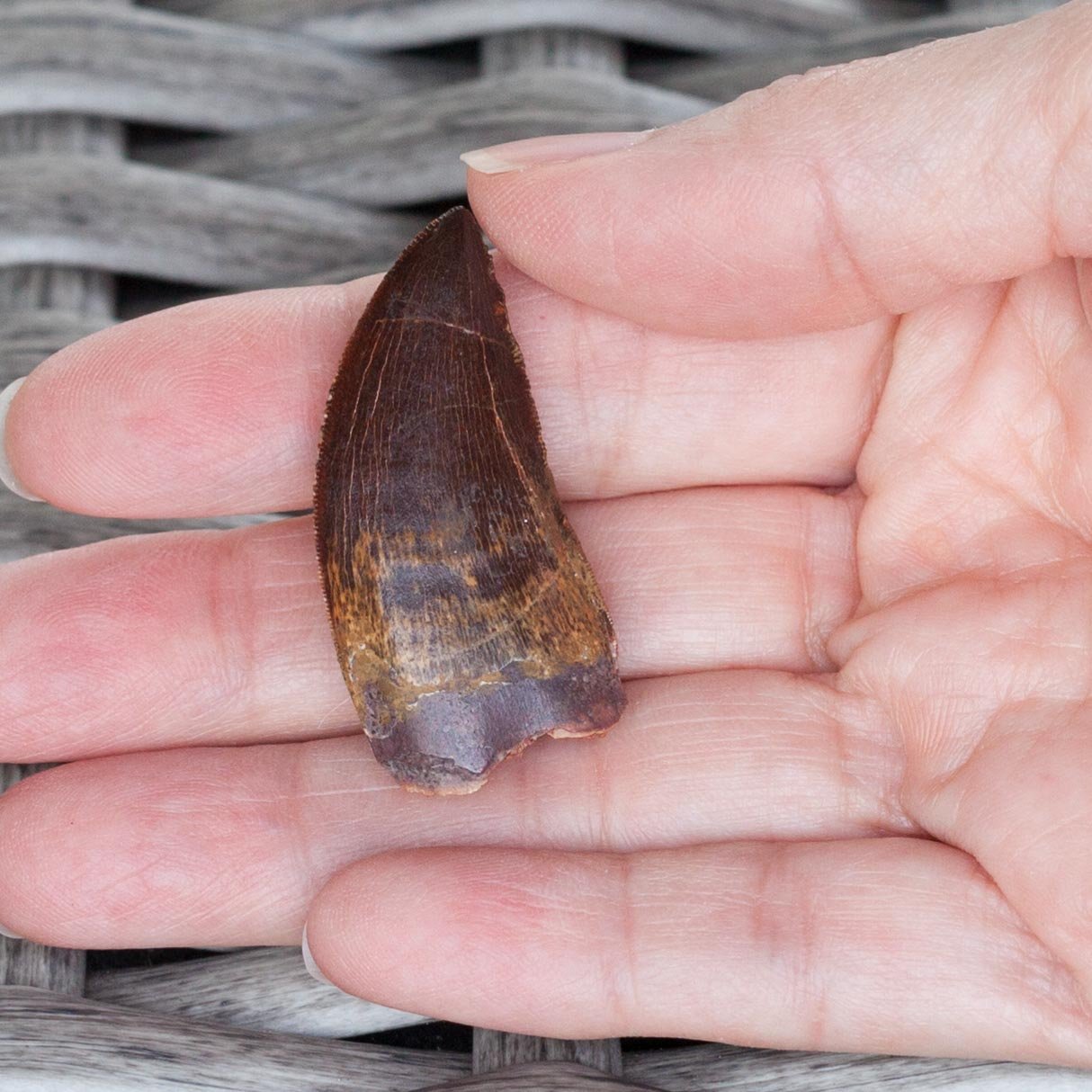 Image 2 of 4
Image 2 of 4

 Image 3 of 4
Image 3 of 4

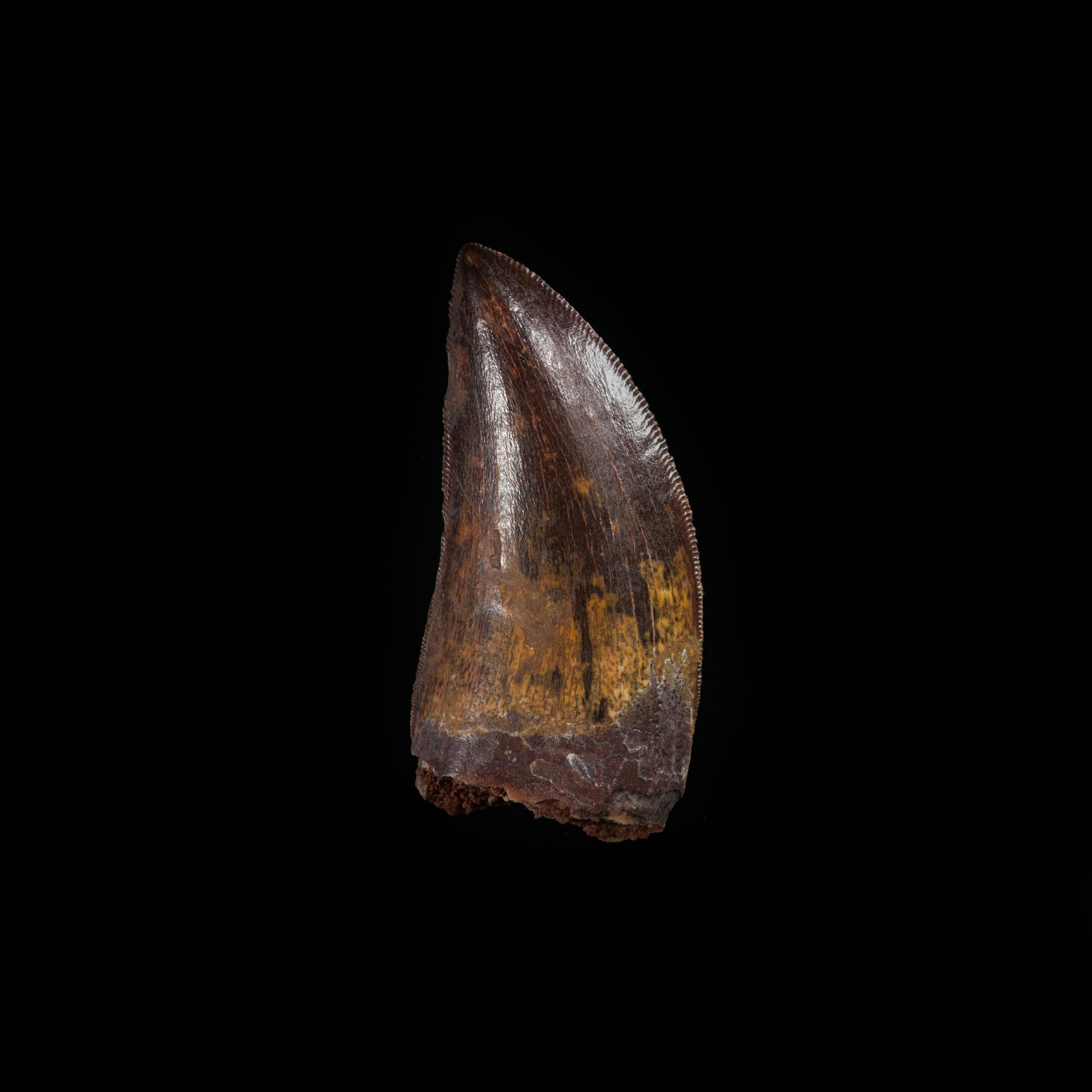 Image 4 of 4
Image 4 of 4





Carcharodontosaurus saharicus
Vendor: Fossil Soup
SKU Number: SQ3651848
Carcharodontosaurus saharicus is a carnivorous theropod from Morocco that is popularly referred to as the African T-Rex. This is a good example of a lateral maxillary or dentary (upper or lower jaw) tooth with very well defined distal and mesial carinae (forward and backward facing serrated edges). The distal carina does show some signs of ancient damage to the denticles, possibly through erosion or natural wear. There is a high gloss, dark brown to red patina and no natural wear on the apex of the crown. There does not appear to have been any repair or restoration to the tooth.
It should be noted that it is very difficult to determine tooth position based on the inspection of isolated examples. Therefore we use certain morphological features to suggest general location. A morphological diagram is provided further down the page.
Full dimensions are listed below.
Vendor: Fossil Soup
SKU Number: SQ3651848
Carcharodontosaurus saharicus is a carnivorous theropod from Morocco that is popularly referred to as the African T-Rex. This is a good example of a lateral maxillary or dentary (upper or lower jaw) tooth with very well defined distal and mesial carinae (forward and backward facing serrated edges). The distal carina does show some signs of ancient damage to the denticles, possibly through erosion or natural wear. There is a high gloss, dark brown to red patina and no natural wear on the apex of the crown. There does not appear to have been any repair or restoration to the tooth.
It should be noted that it is very difficult to determine tooth position based on the inspection of isolated examples. Therefore we use certain morphological features to suggest general location. A morphological diagram is provided further down the page.
Full dimensions are listed below.
Additional Information
Carcharodontosaurus is a large Carcharodontosaurid therapod dinosaur from the Cenomanoan age, around 100 million years ago. Carcharodontosaurus is popularly referred to as the African T-Rex, but did in fact pre-date its more famous cousin by almost 30 million years. Carcharodontosaurus evolved in isolation of Tyrannosaurus Rex, which lived on the western island continent of North America known as Laramidia. Laramidia was isolated from the rest of the North American continent by the Western Interior Seaway.
Formed around 300 million years ago, the break-up of Pangaea about 180 million years ago gave rise to 2 new large masses, Gondwana and Laurasia. This was during the age of reptiles (including dinosaurs) and the age of ferns and cycads and conifers - the Permian and Triassic periods. Gondwana included most of the land masses in today's southern hemisphere, including Antarctica, South America, Africa, Madagascar and Australasia, as well as the Arabian Peninsula and the Indian subcontinent, which have now moved entirely into the northern hemisphere. Laurasia contained the rest of today's northern hemisphere continents including Europe, North America and Asia.
References:

